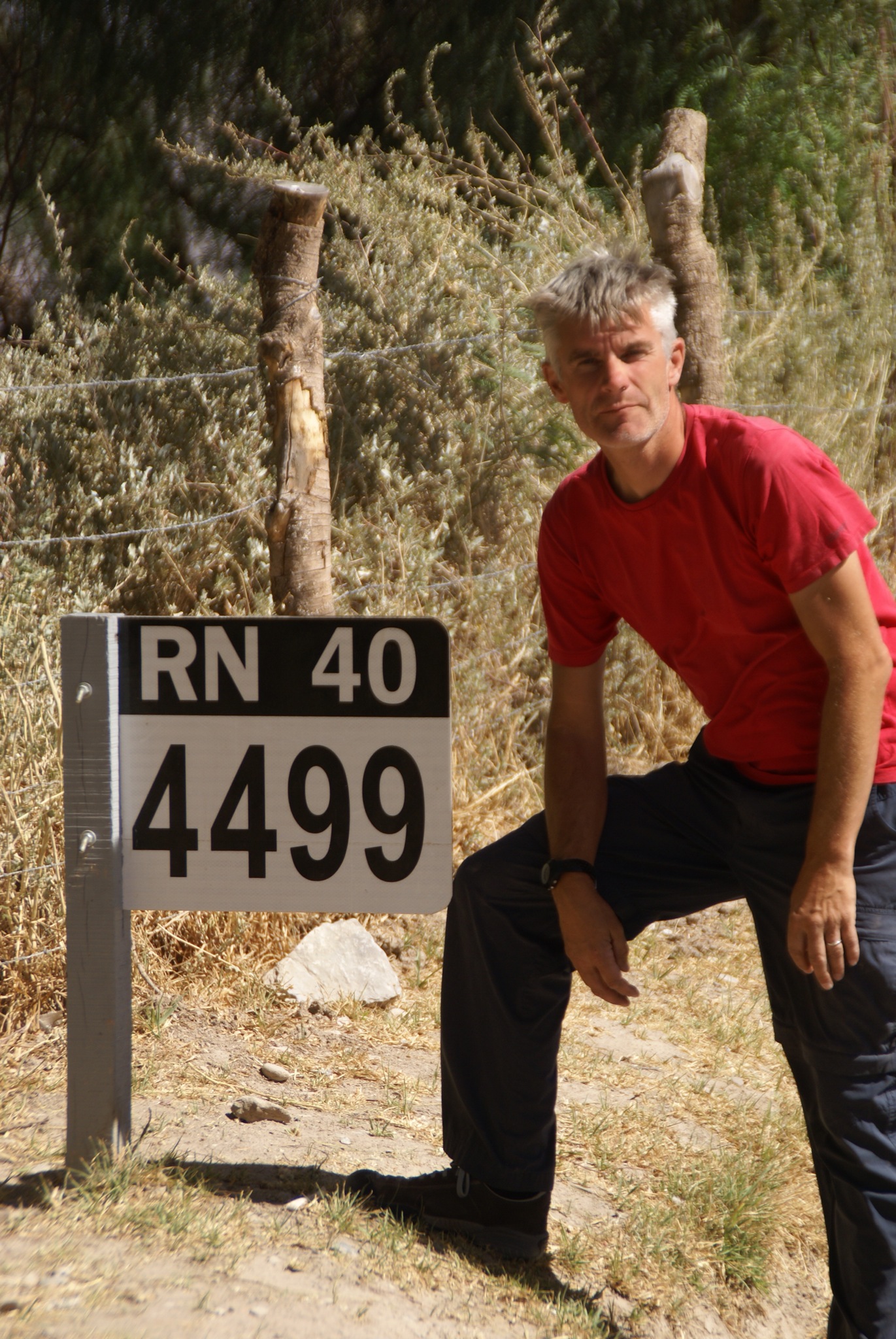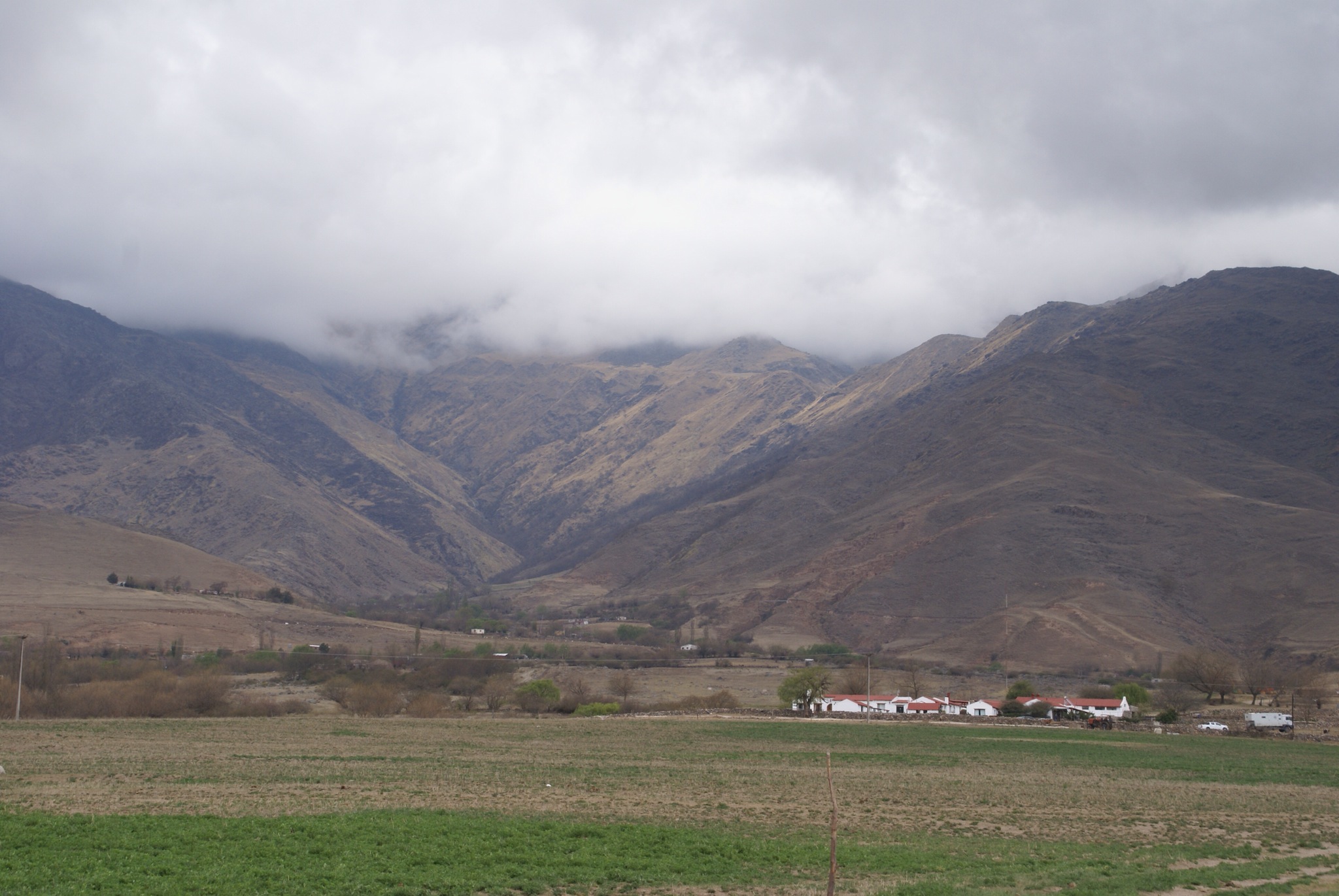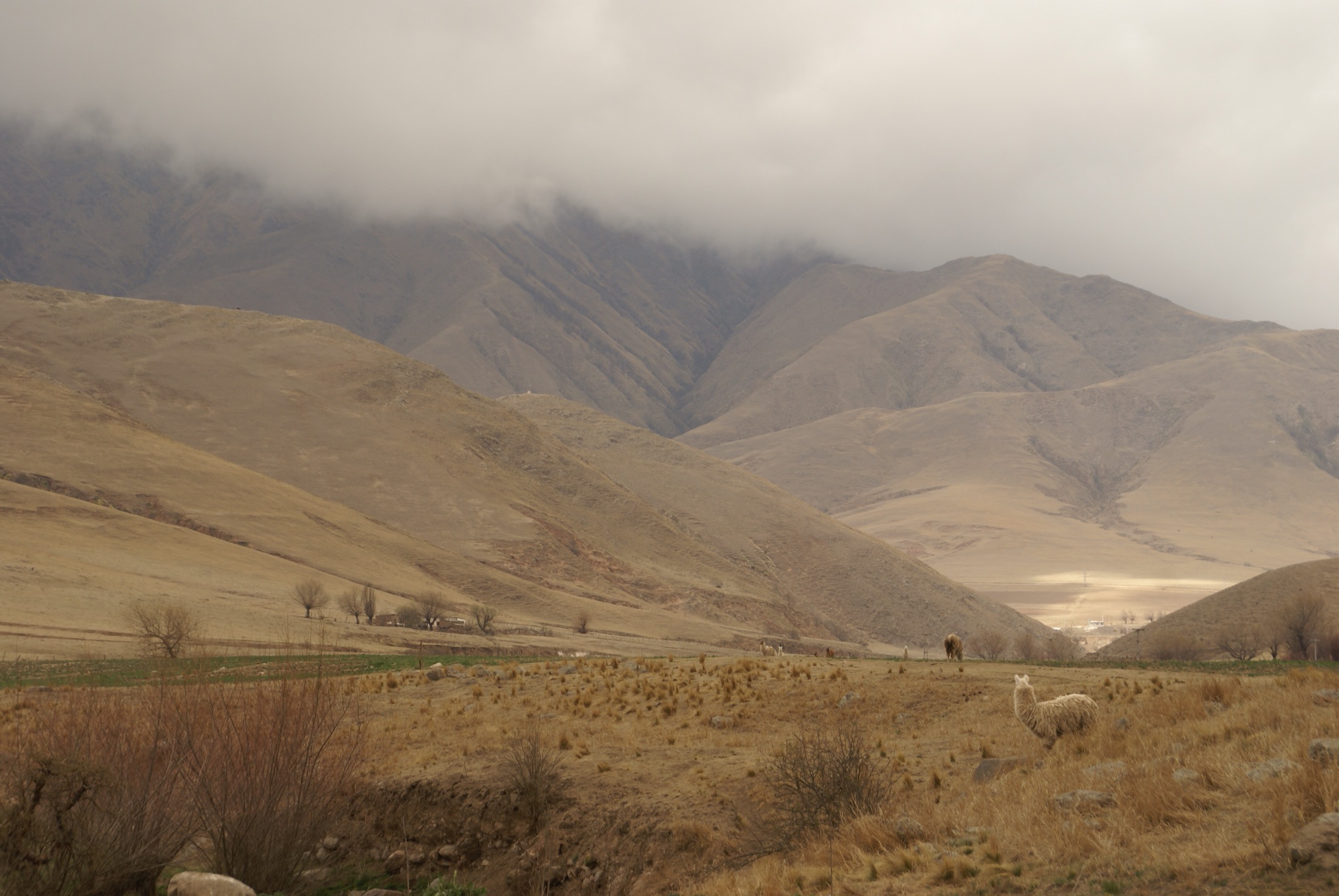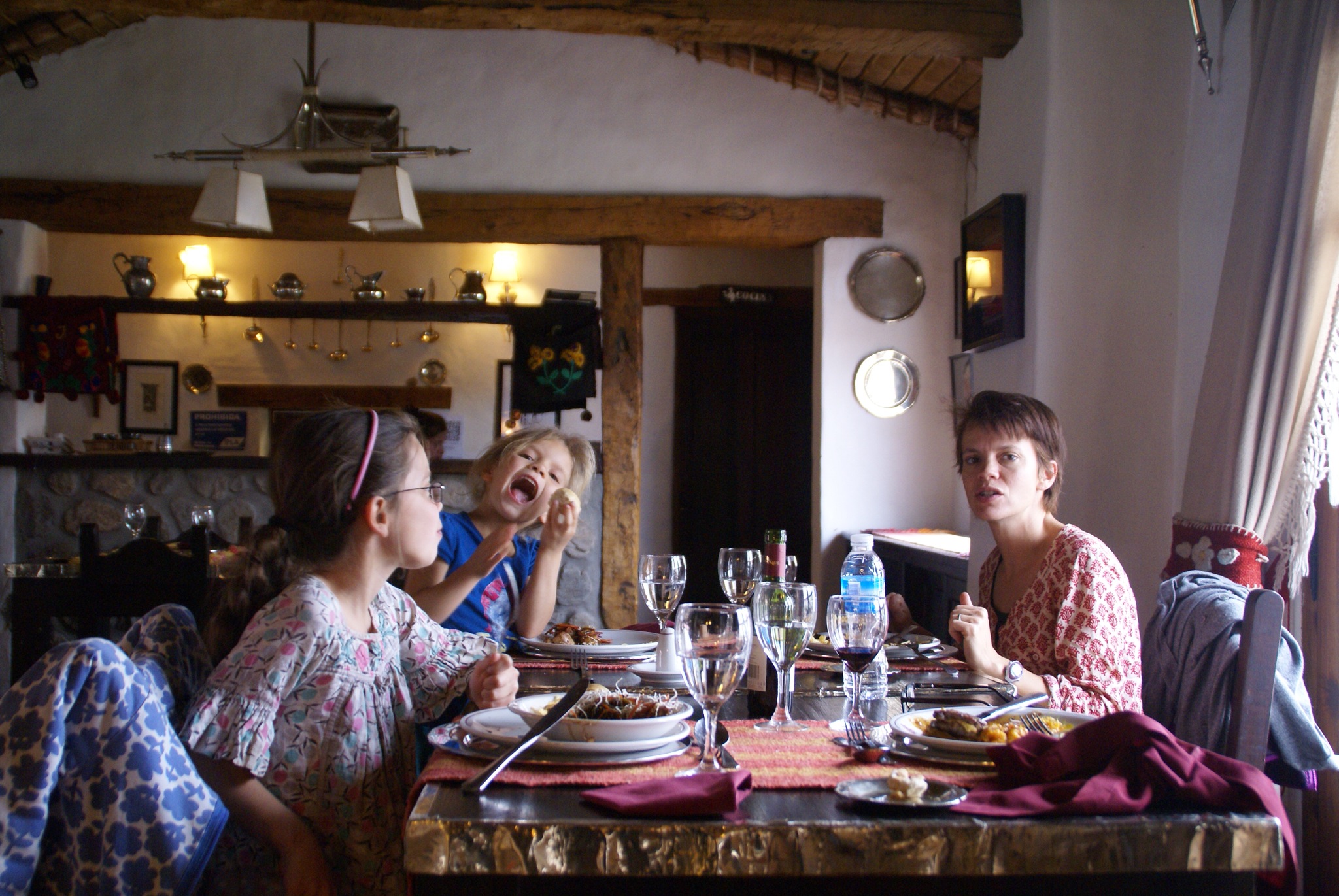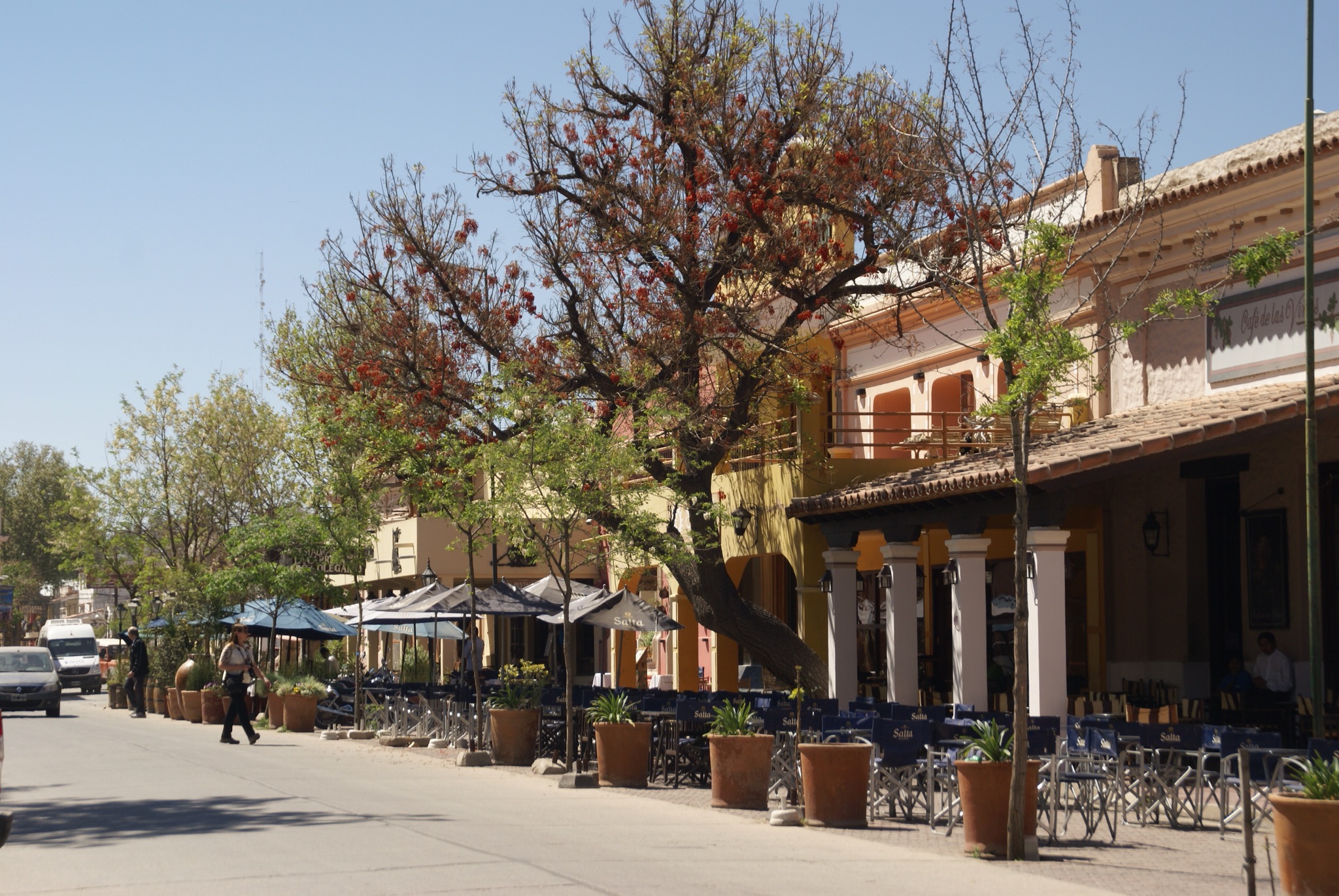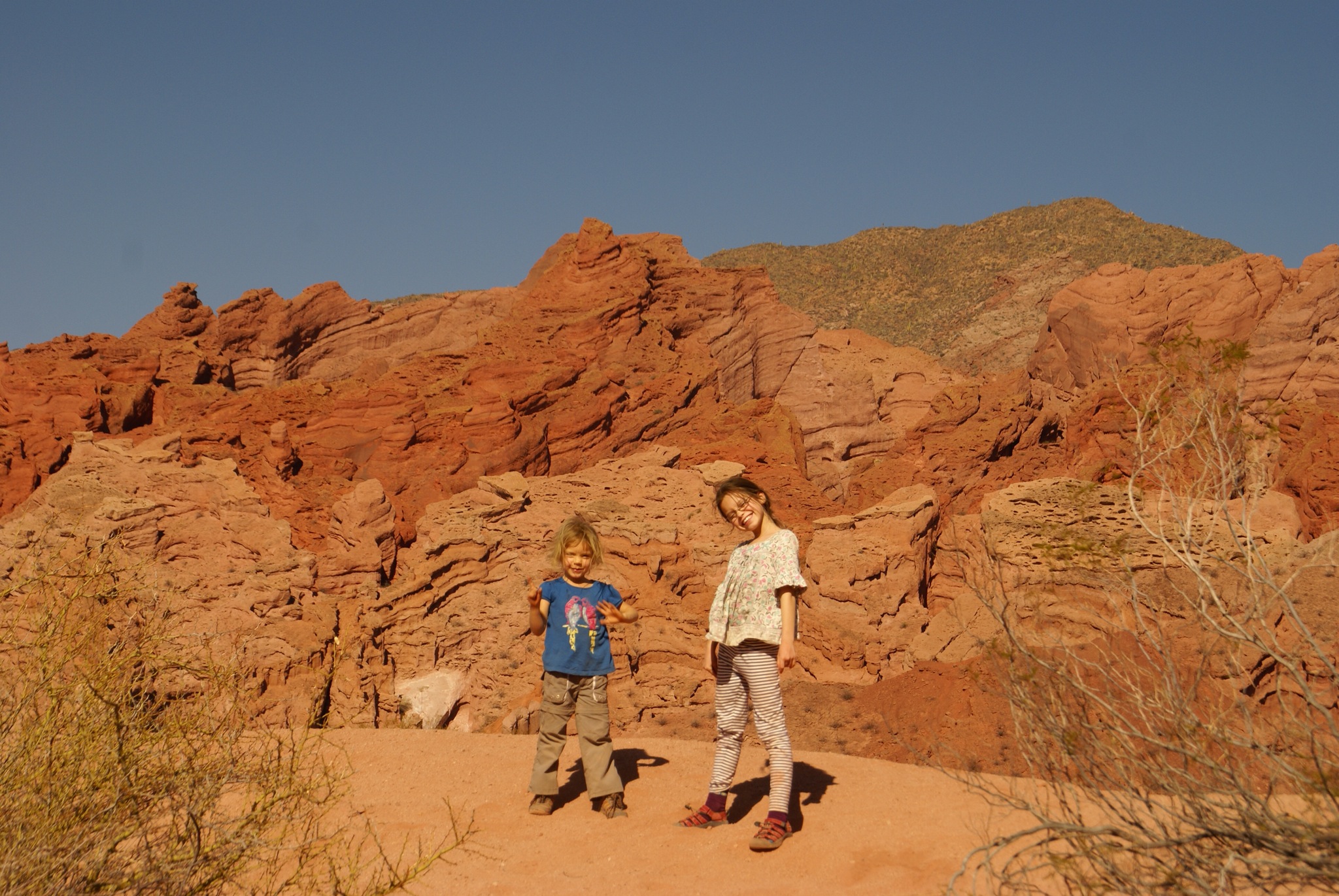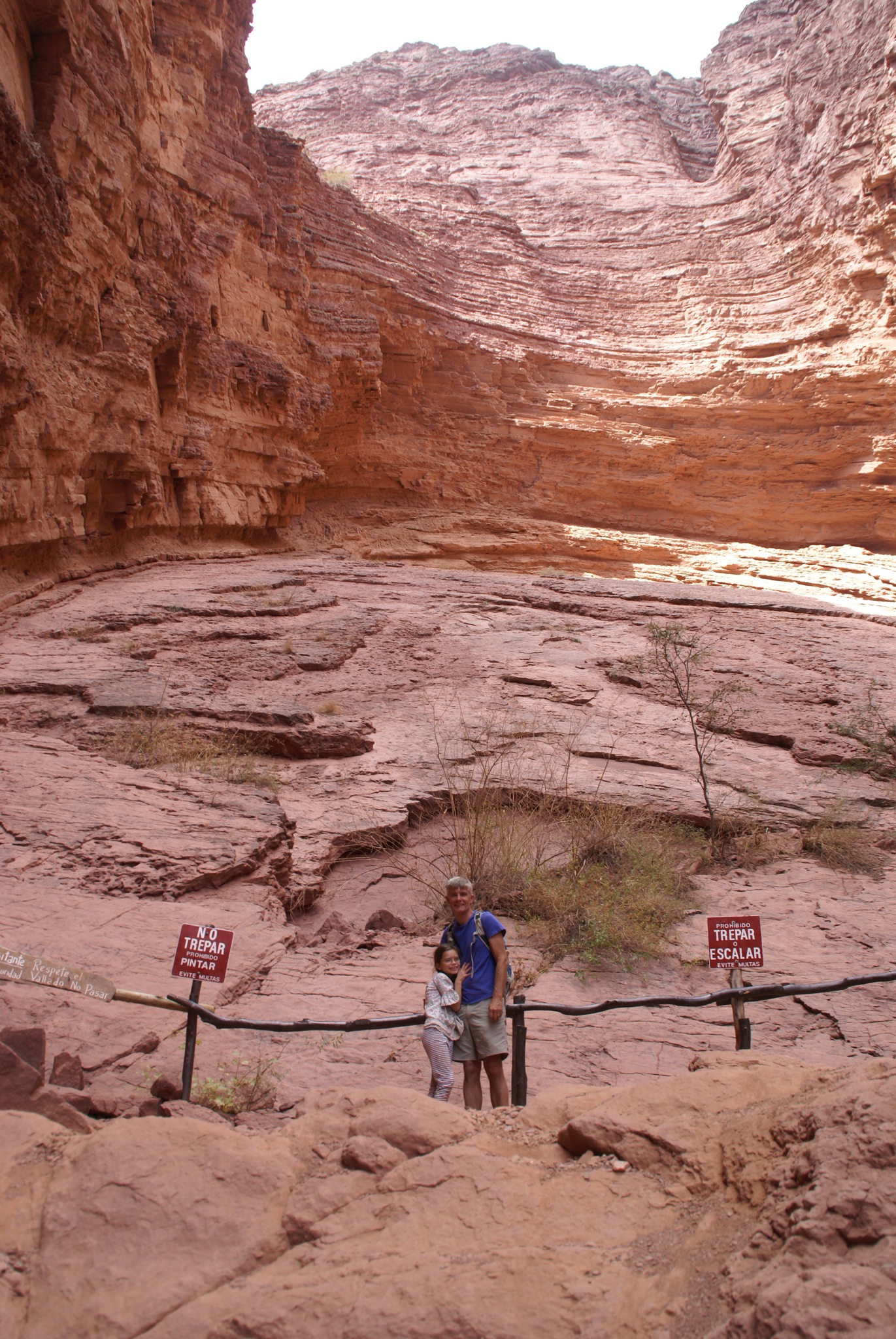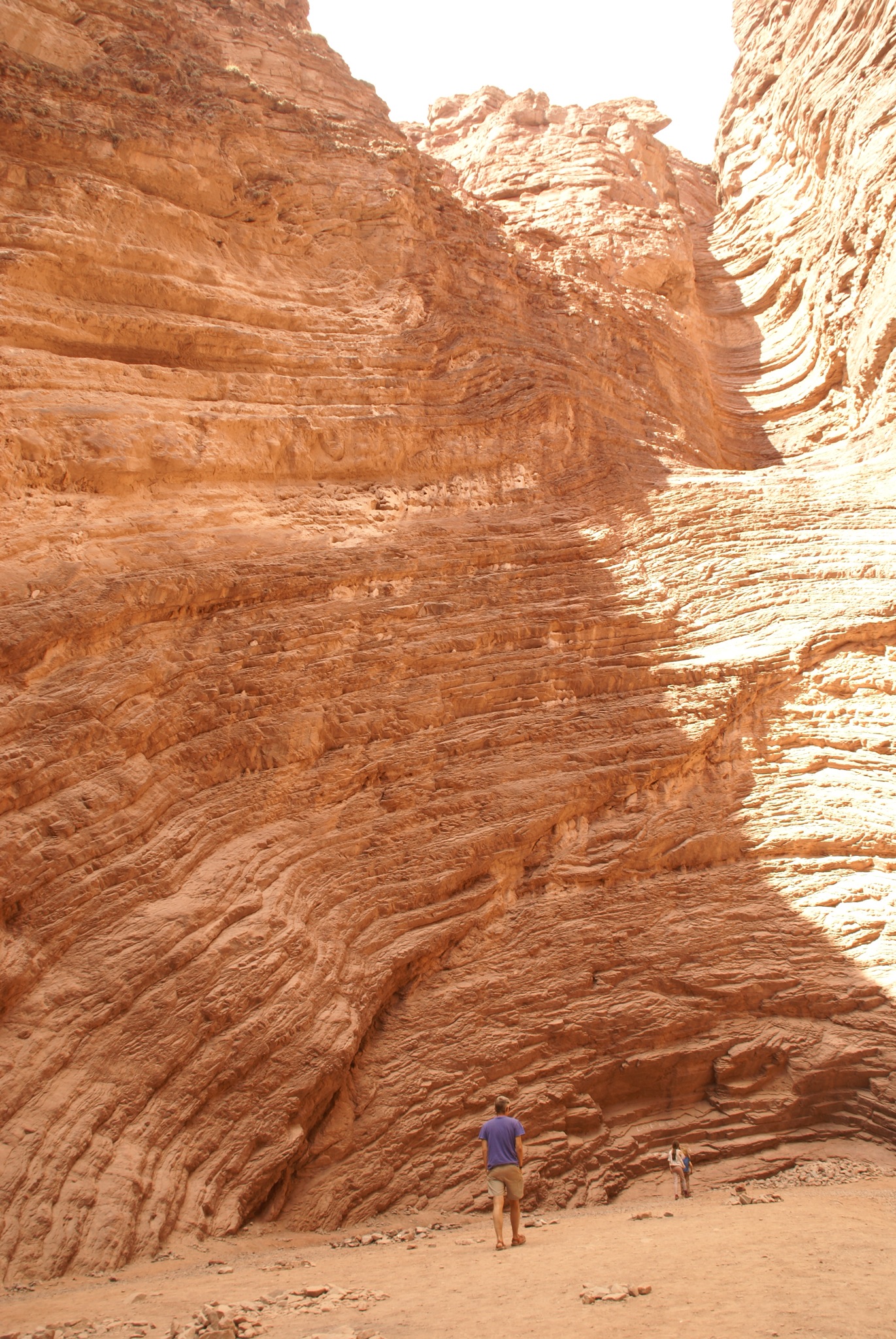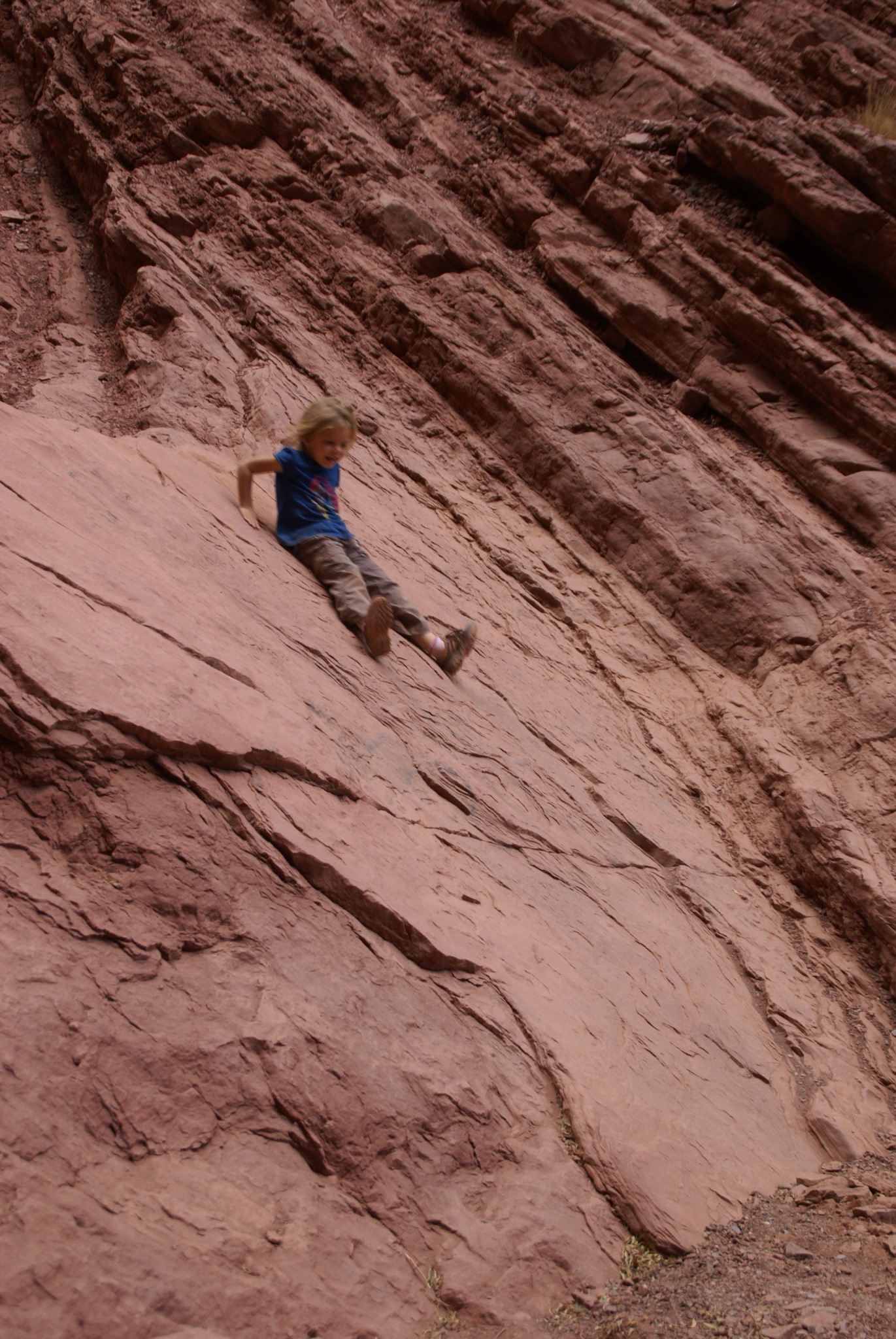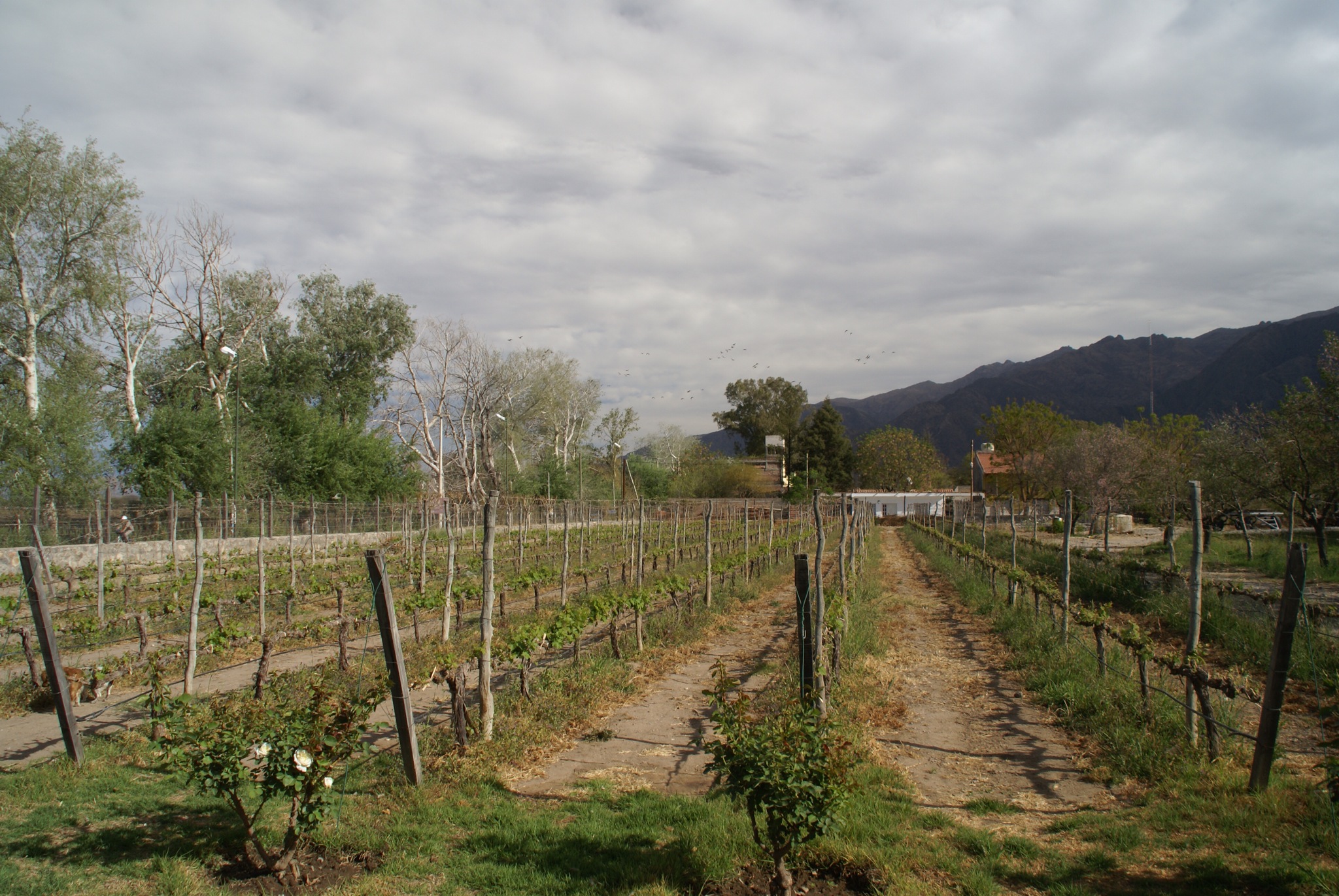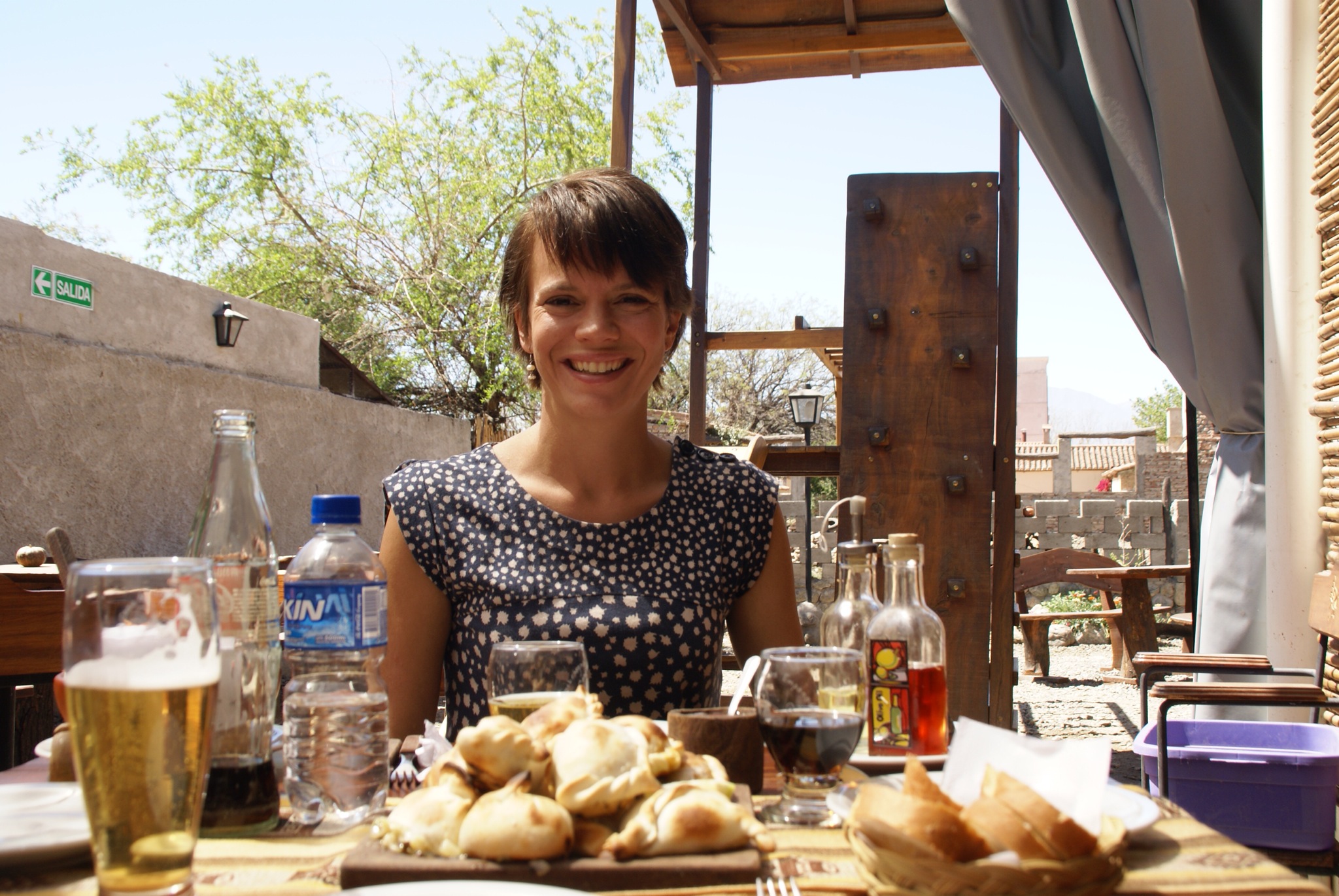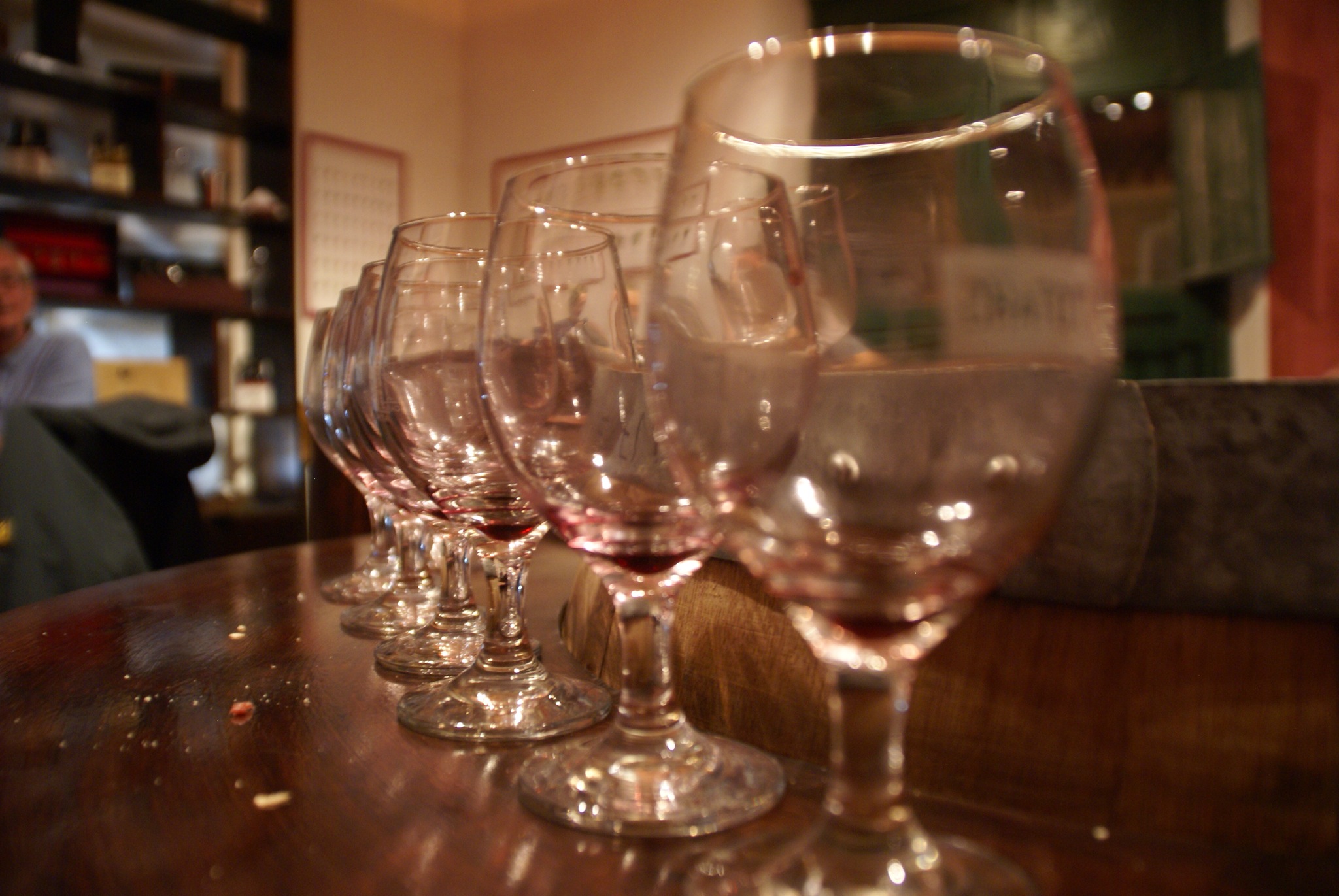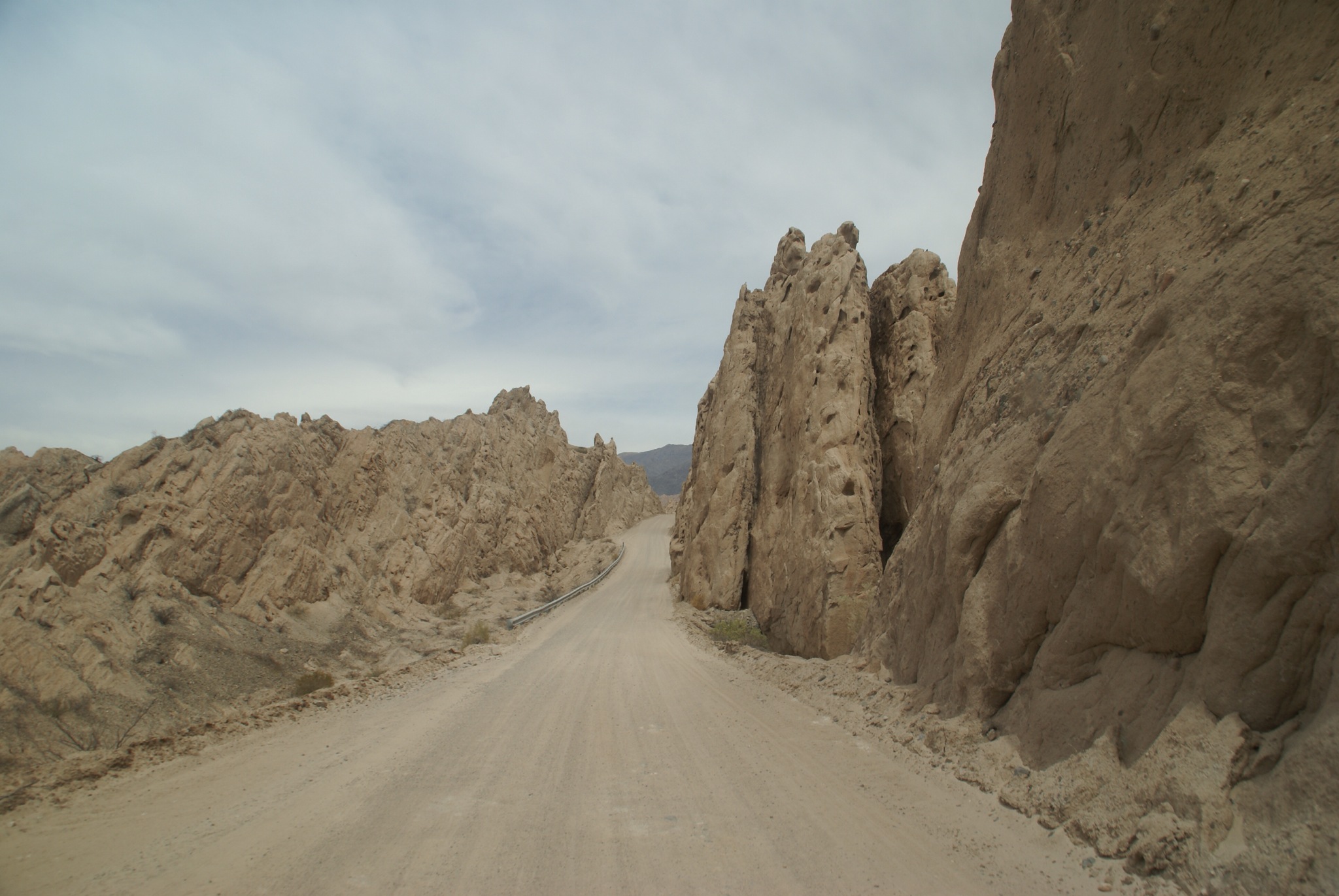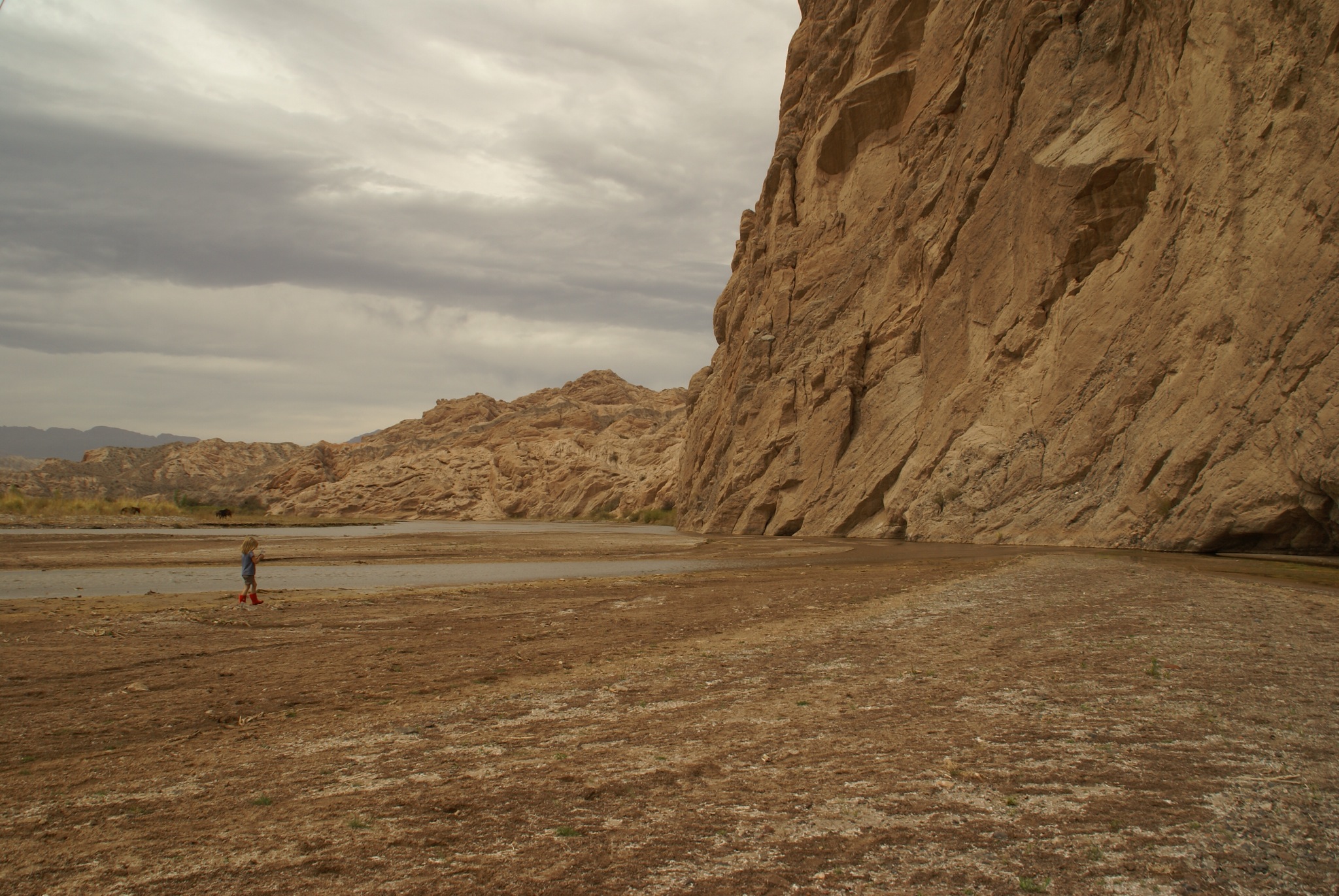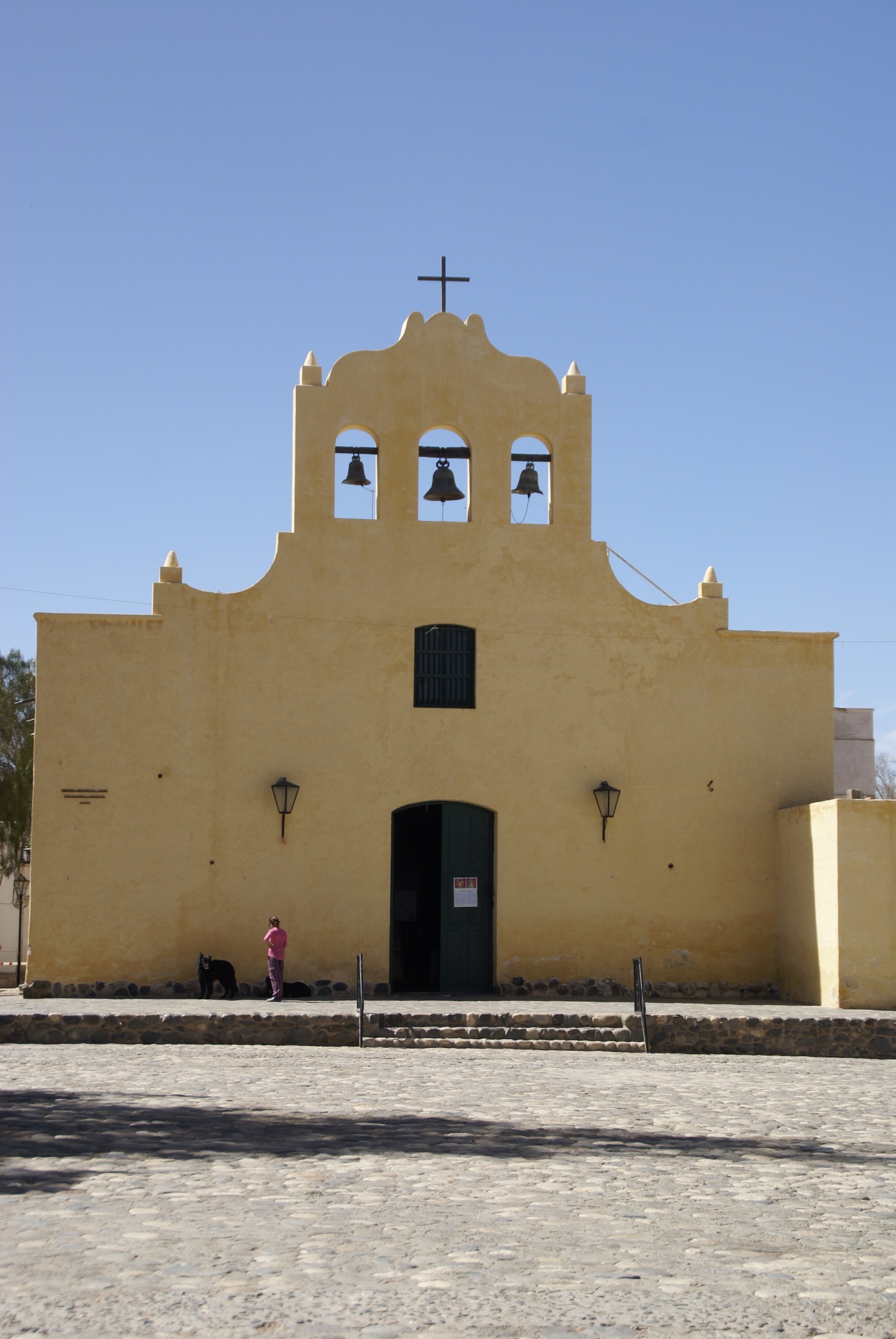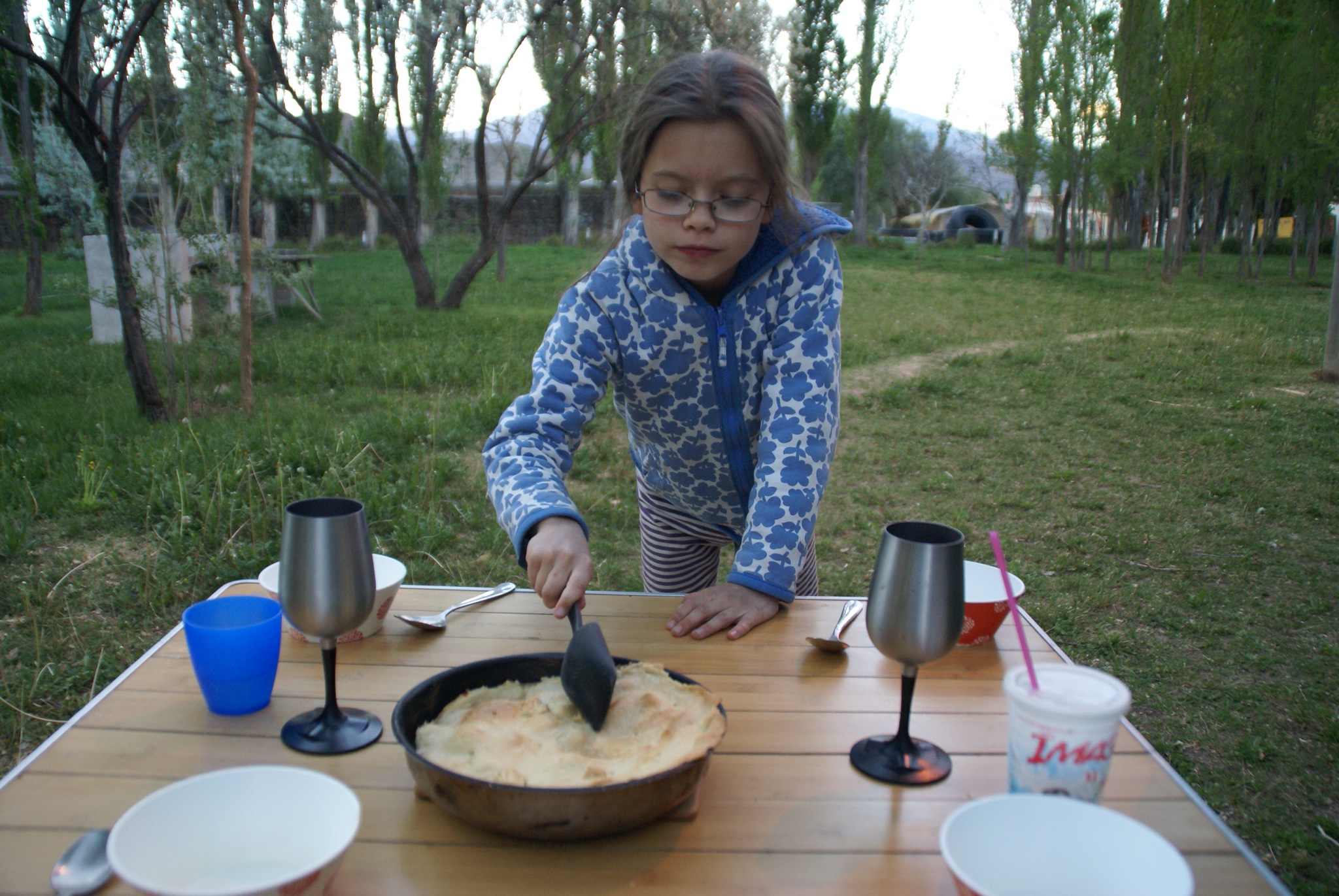The drive across the mountains from Cachi to Salta was gorgeous as we wound our way past the fertile valley in the early morning light and up into the scrubby dry hills. The high plateau of Parque Nacional Los Cardones was strewn with huge Cordi Cacti, the sort of cacti a child would draw with a cowboy underneath. The excellent dirt road took us down over 2000m towards Salta, it zig zagged down through a deep valley. The sun peeked though the layer of fog blanketing the pass above lighting up the valley ethereally. It was the sort of road: twisting down the mountains with blind corners, over massive drops and without safety barriers that filled my nightmares before we left on this trip. Everyone has their particular weak spot and being suspended over a precipice with tumbling river hundreds of metres below is mine, even if the scenery is absolutely breathtaking. However now over a year in, it just seems rather routine and anyway this road was far, far wider and in better condition than many we've driven on in the mountains. Once down the trees and surroundings became more lush, so different from the desert we'd started in that morning, or the high altitude plateau we had driven through.


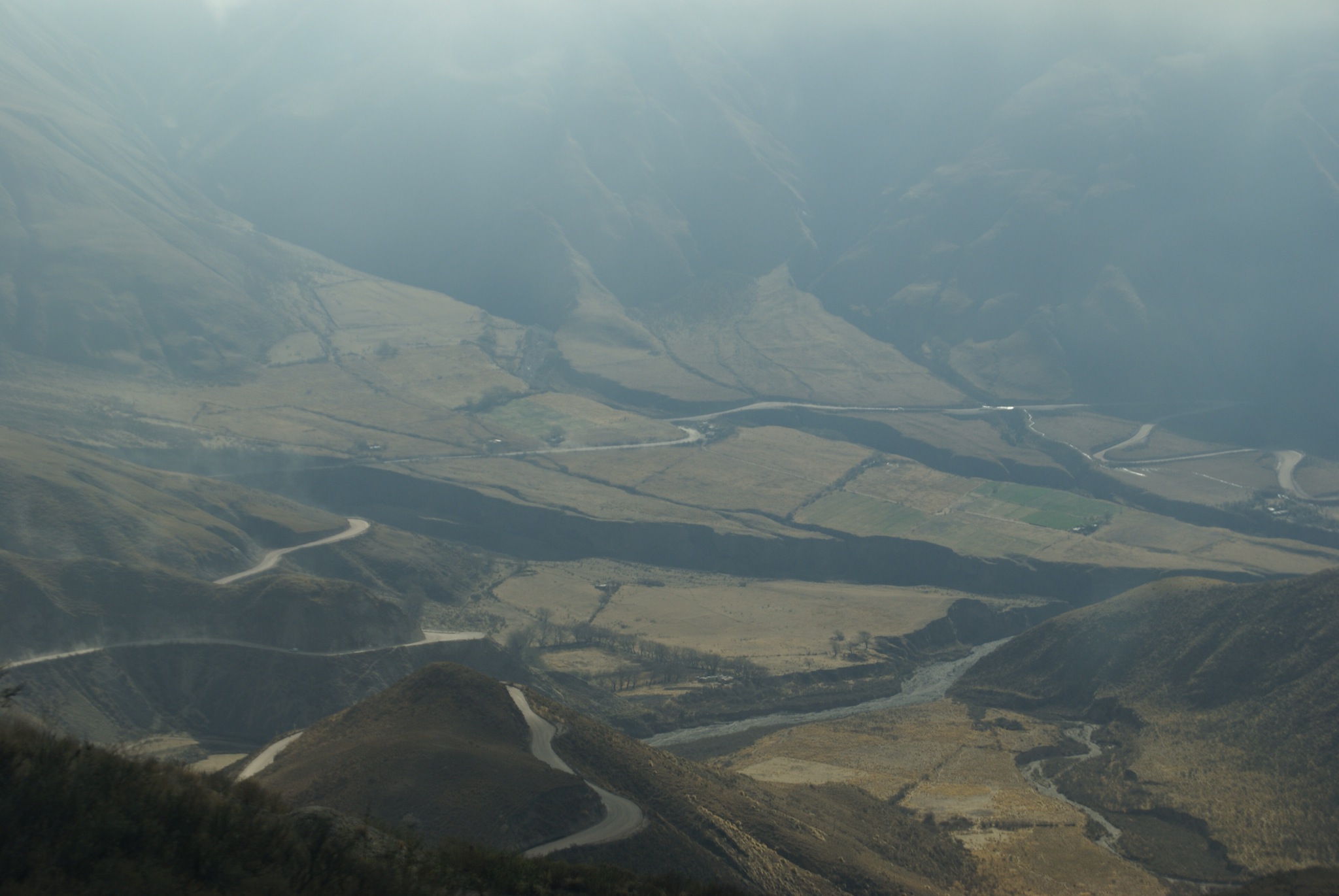
The rather scruffy municipal campsite in Salta contained the biggest swimming pool I've ever seen, it must have been 300m long and 100m wide, unfortunately for the girls it was empty. Supposedly it is filled for just 3 months of the year and it takes 10 days to fill. Although the campsite was huge, we were advised to park up with several other campervans and overlanders in one corner, due to petty theft at night. It was pleasant enough though in our shady spot. Spring has definitely come to this part of Argentina and it has been so lovely to sit out again in the evenings. It had done a lot to improve family relations too, all of us huddled inside in the evenings because of the cold, while the girls "tried" to go to sleep was rather wearing.
Dressed at last in summer dresses, we had a pleasant day wondering around colonial Salta before enjoying another excellent lunch with a bottle of red. This might not be what "proper" overlanding is about....where is the mud, rough roads and mosquitoes?......but it sure makes a nice change.
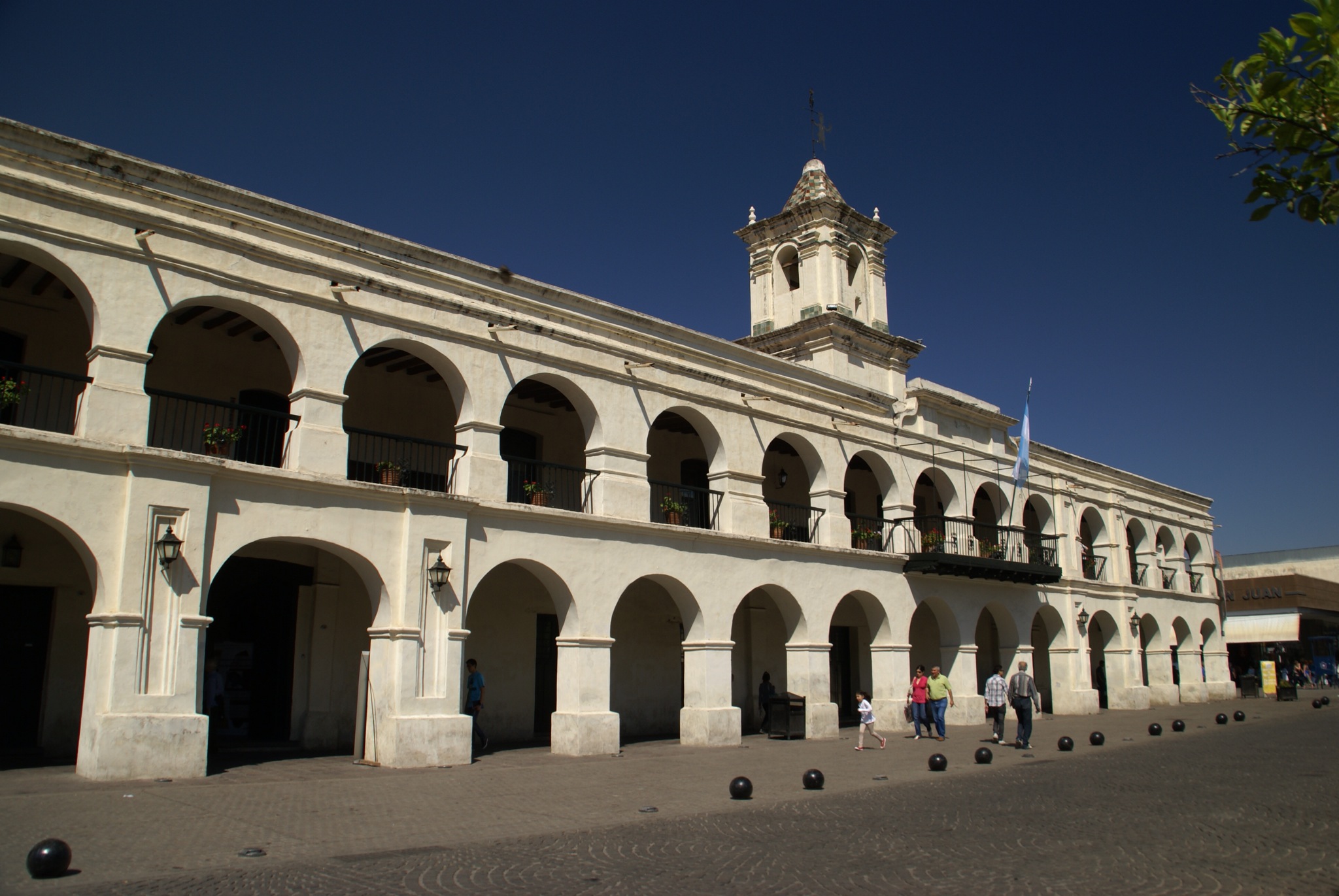

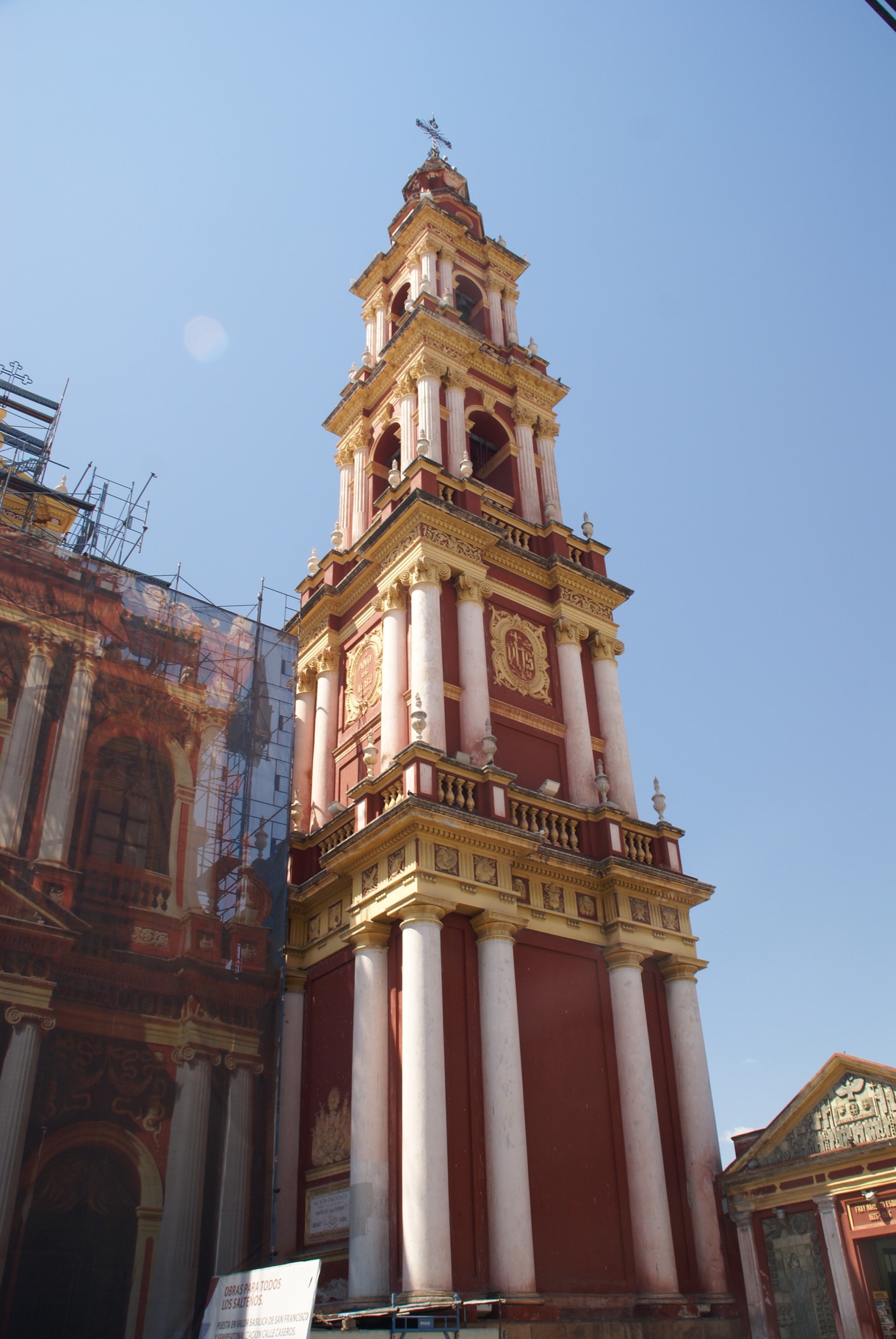
We had to change dollars in Salta, the Argentine economic problems mean that there is a big difference between the official rate and the "blue" street rate. Pausing outside an exchange office on the corner of the main square, we were approached by a couple of guys asking if we wanted to change money. I thought we might have had to look harder as there were a couple of policemen nearby but although the transaction is illegal, they didn't take any notice and the Changer wasn't at all perturbed by their presence. We were surprised how much the rate had changed since we arrived, they were now quoting 14.3 pesos to the dollar compared with two weeks ago which was 12. Great for us but the high inflation rate must be having a terrible effect on the Argentinian people. In the cities it looks prosperous enough but you can see the cracks underneath. Whipping out a big stack of Pesos the Changer handed them over, this is when I really appreciate Steve's accountant brain. He instantly calculated the correct amount, counted it twice, gave some change and pocketed it all within a minute.
Two long day drives took us across the Argentine Chaco, very flat, unpopulated and covered with thorny scrub. We parked up for the night in the municipal campsite in the small town of Pampa del Infierno, we had considered boondocking but a constant fence on either side of the road made it difficult. Empty apart from a few truckers having a siesta, it seemed an alright place to break the journey. That evening we came across another example of the cultural difference we just can't seem to get a handle on: personal space. Almost every town in Argentina seems to have a municipal campsite, it's really nice that they are used by everyone in the community, not just for campers, but for asados (barbecues), playing, football or just hanging out. As we were washing up and the the sun was setting, we were alone in the site apart from a couple parked up in the furthest edges behind some trees, as I said all types of recreation are catered for. A group of guys ambled over with a big bag of wood obviously going to have a barbecue but instead of choosing one of the 8 grills scattered throughout the campsite they chose the one just 1m off of the back of our truck. Argentinians have long siestas in the afternoons, so they often don't eat their evening meal until way after 10 at night, so we knew it would be a long evening. Unfortunately we were too busy getting the girls to bed to notice what they were doing until they lit their fire. They were nice and friendly enough guys but they couldn't seem to understand why we might have a problem with them having a party a metre from our bedroom window. Steve did a tricky reverse through the trees in the dark to give us a peaceful night.
All through Argentina we have seen small shrines covered in red flags at the side of the roads. They are all in memory of a cowboy, Robin Hood type figure called Gauchito Gil, who is supposed to bestow miraculous gifts on those who pay their respects. Supplicants leave offerings of alcohol, cigarettes, car parts and other very random gifts.
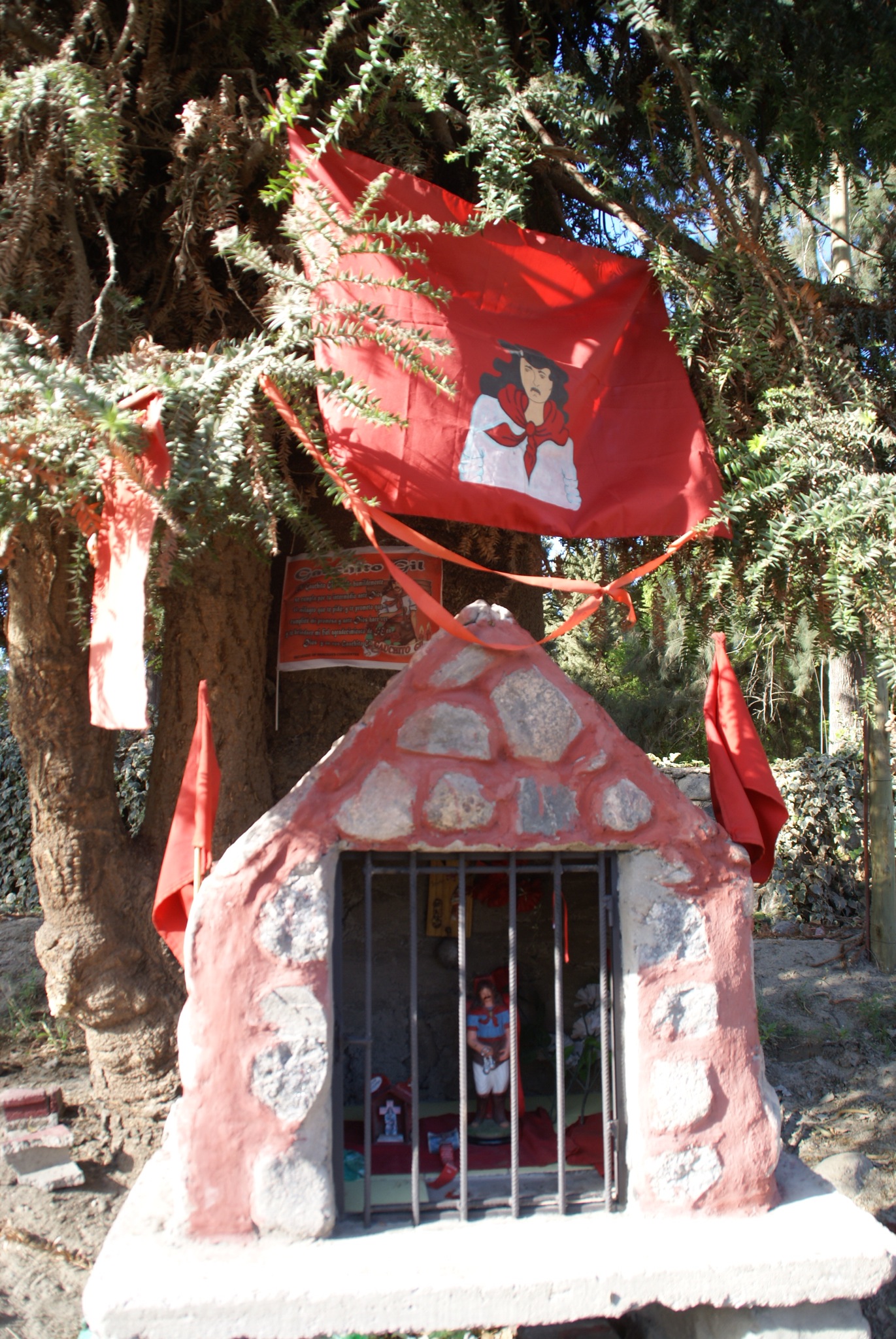
The Chaco became more populated and agricultural as we neared Resistencia. The town was filled with over 500 sculptures, which made it a good place to stretch our legs before we slept there overnight.
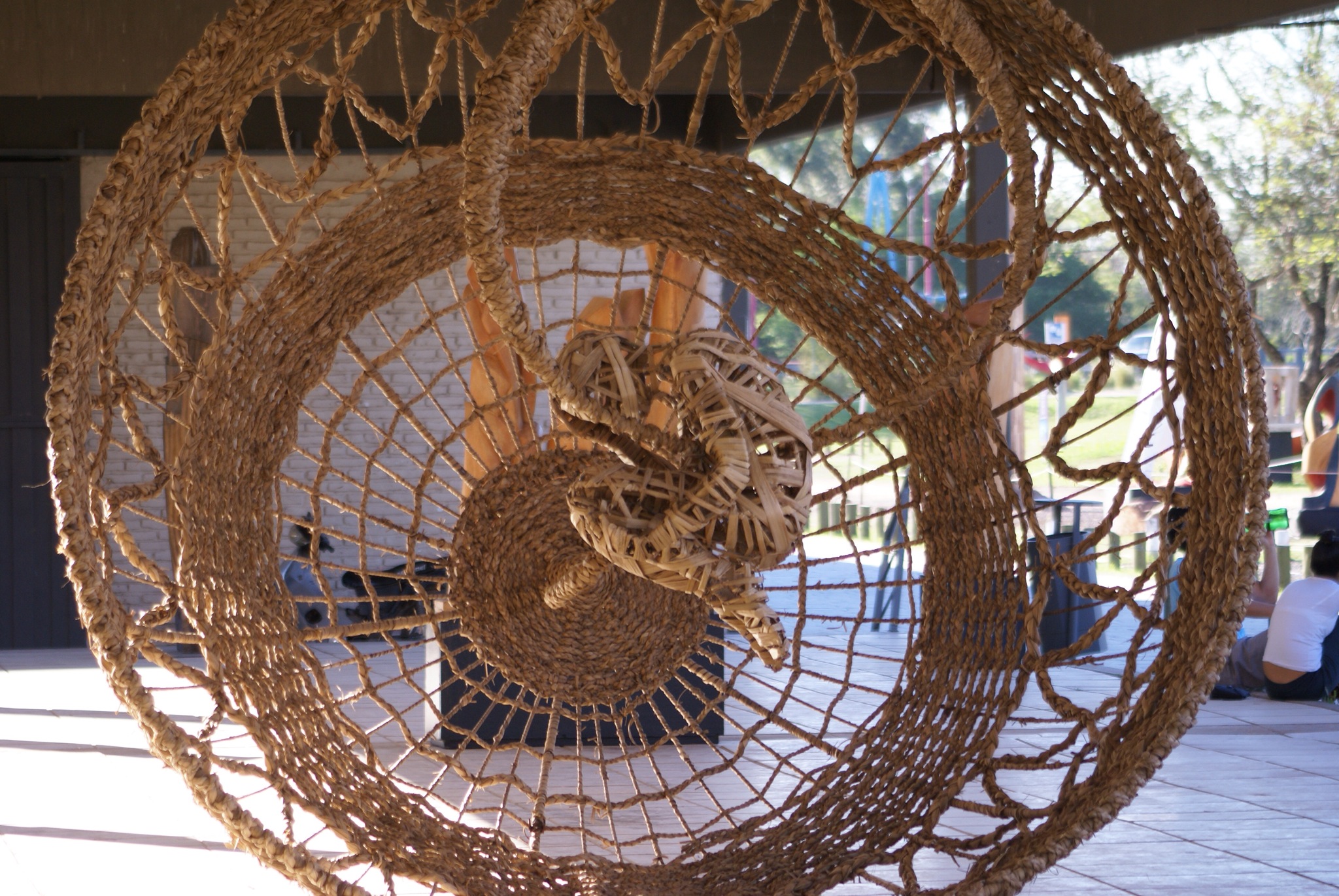
Another long flat straight drive took us to near Ituzaingo on the Parana river. Driving through a town we noticed how many drivers were enjoying their morning gourd of yerba mate or mate, as it is more commonly known. This bitter herb tea is somewhat of a national obsession with its own equipment and rituals. Everyone carries their own gourd, bombilla (a silver straw with a filter) and flask of hot water. There is special machines at petrol stations and campsites to fill your flask with hot water and people drink it everywhere. Yesterday I even saw the third person on the back of a motorbike sipping away on it while they sped past. Sorry there are no photos of the Argentinians sipping their morning mate, I wouldn't want a photo taken of me before my morning cup of tea, so I didn't try to take one . We'll definitely post a photo of the equipment when we come back to Argentina.
The campsite at Ituzaingo was part of an Estancia (large cattle farm) and was teeming with birds, it made for a relaxing stop before crossing the border to Paraguay.
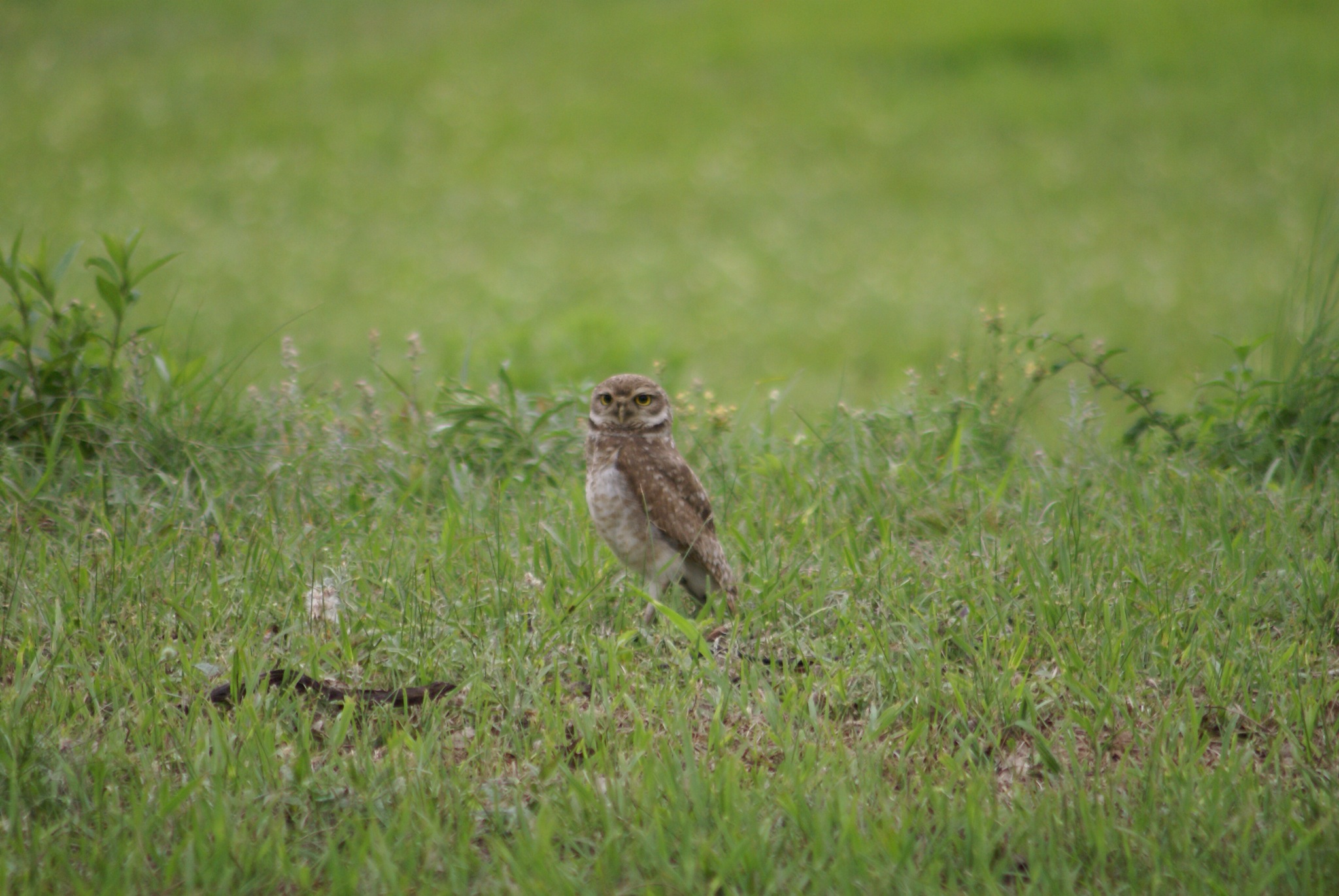
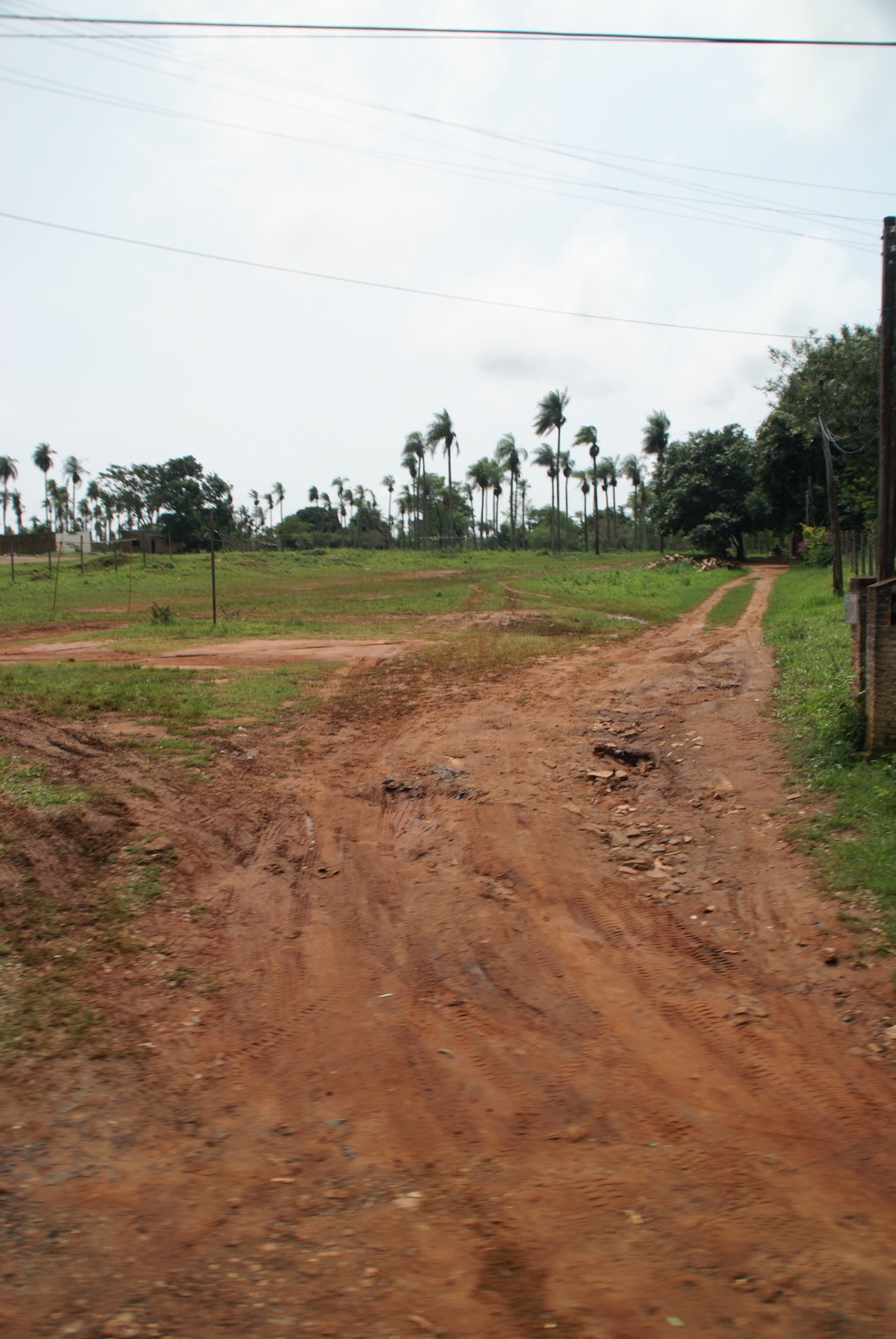 We crossed the border into Paraguay at Posadas/Encarnation. The border was on a large bridge over the River Paraná where border processes were at each end of the bridge. The process was very smooth and everyone was very helpful and 45 minutes later we were through and in Paraguay.
Paraguay is a bit of an enigma in South America and not many people know about it or visit it. It is one of only 2 landlocked South American countries and since independence has been ruled by a series of despotic dictators up until recently. It is also the only country where the local indigenous language Guarani is still an official language of the country and is still widely spoken. We were keen to learn more.
As we set off the air was very heavy and humid and the red earth was sticky and wet. It reminded me a bit of Africa.
Our first stop was at a lovely campsite in the grounds of a small nature reserve near to the Jesuit Missions. The Jesuits set up a number of missions in Paraguay, Argentina, Brazil and Bolivia. These missions preserved much of the way of life of the local population and protected the indigenous people from the excesses of the Spanish and Portuguese colonialists. Over time they became more and more powerful and were described as a colony within a colony. This antagonised the Spanish and the Portuguese who eventually threw the Jesuits out leading to the abandonment and destruction of the missions.
We first visited the mission at Trinidad which is perhaps the best preserved mission with ruins of not just the church but also the the homes of the Guarani people who lived there.
We crossed the border into Paraguay at Posadas/Encarnation. The border was on a large bridge over the River Paraná where border processes were at each end of the bridge. The process was very smooth and everyone was very helpful and 45 minutes later we were through and in Paraguay.
Paraguay is a bit of an enigma in South America and not many people know about it or visit it. It is one of only 2 landlocked South American countries and since independence has been ruled by a series of despotic dictators up until recently. It is also the only country where the local indigenous language Guarani is still an official language of the country and is still widely spoken. We were keen to learn more.
As we set off the air was very heavy and humid and the red earth was sticky and wet. It reminded me a bit of Africa.
Our first stop was at a lovely campsite in the grounds of a small nature reserve near to the Jesuit Missions. The Jesuits set up a number of missions in Paraguay, Argentina, Brazil and Bolivia. These missions preserved much of the way of life of the local population and protected the indigenous people from the excesses of the Spanish and Portuguese colonialists. Over time they became more and more powerful and were described as a colony within a colony. This antagonised the Spanish and the Portuguese who eventually threw the Jesuits out leading to the abandonment and destruction of the missions.
We first visited the mission at Trinidad which is perhaps the best preserved mission with ruins of not just the church but also the the homes of the Guarani people who lived there.
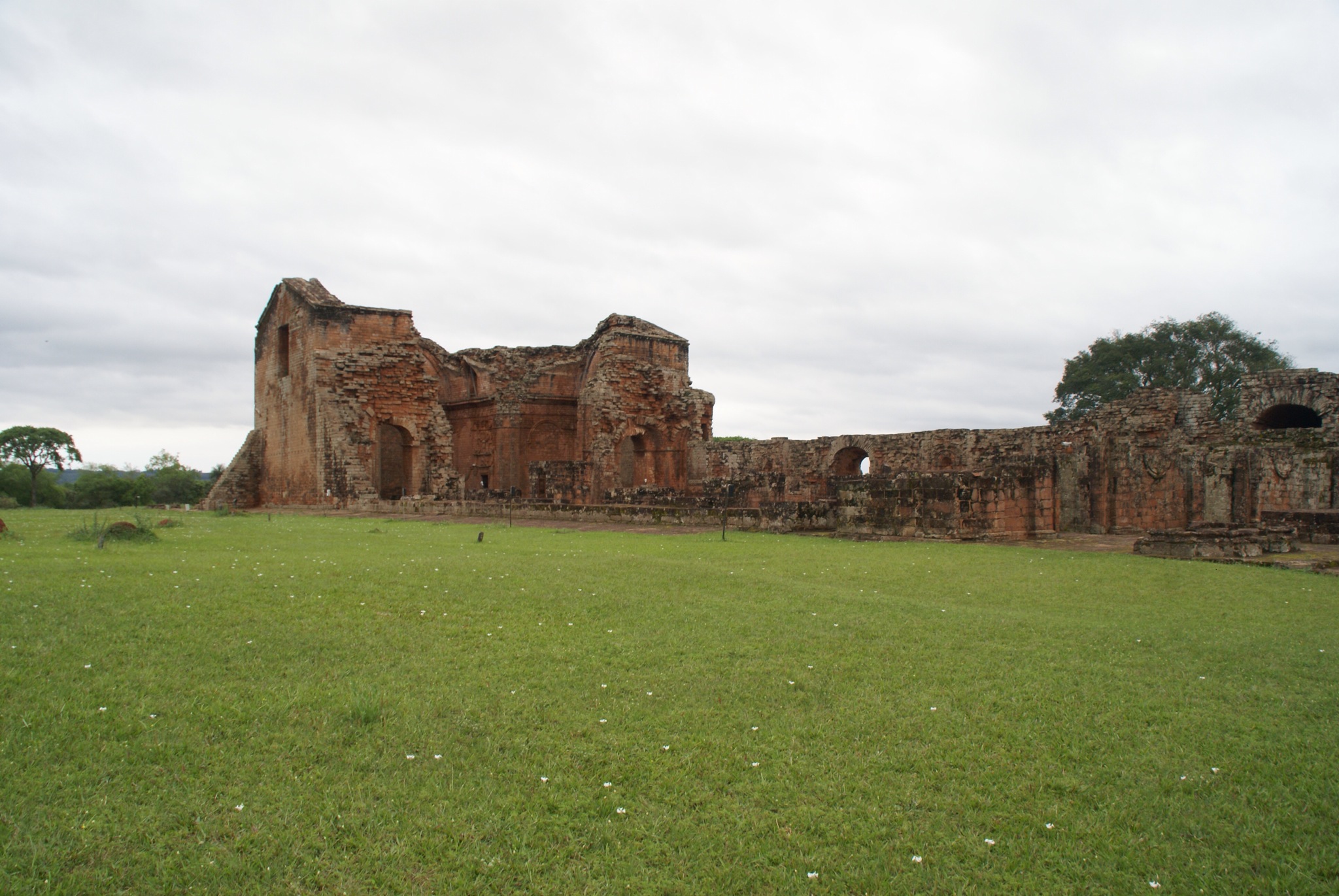
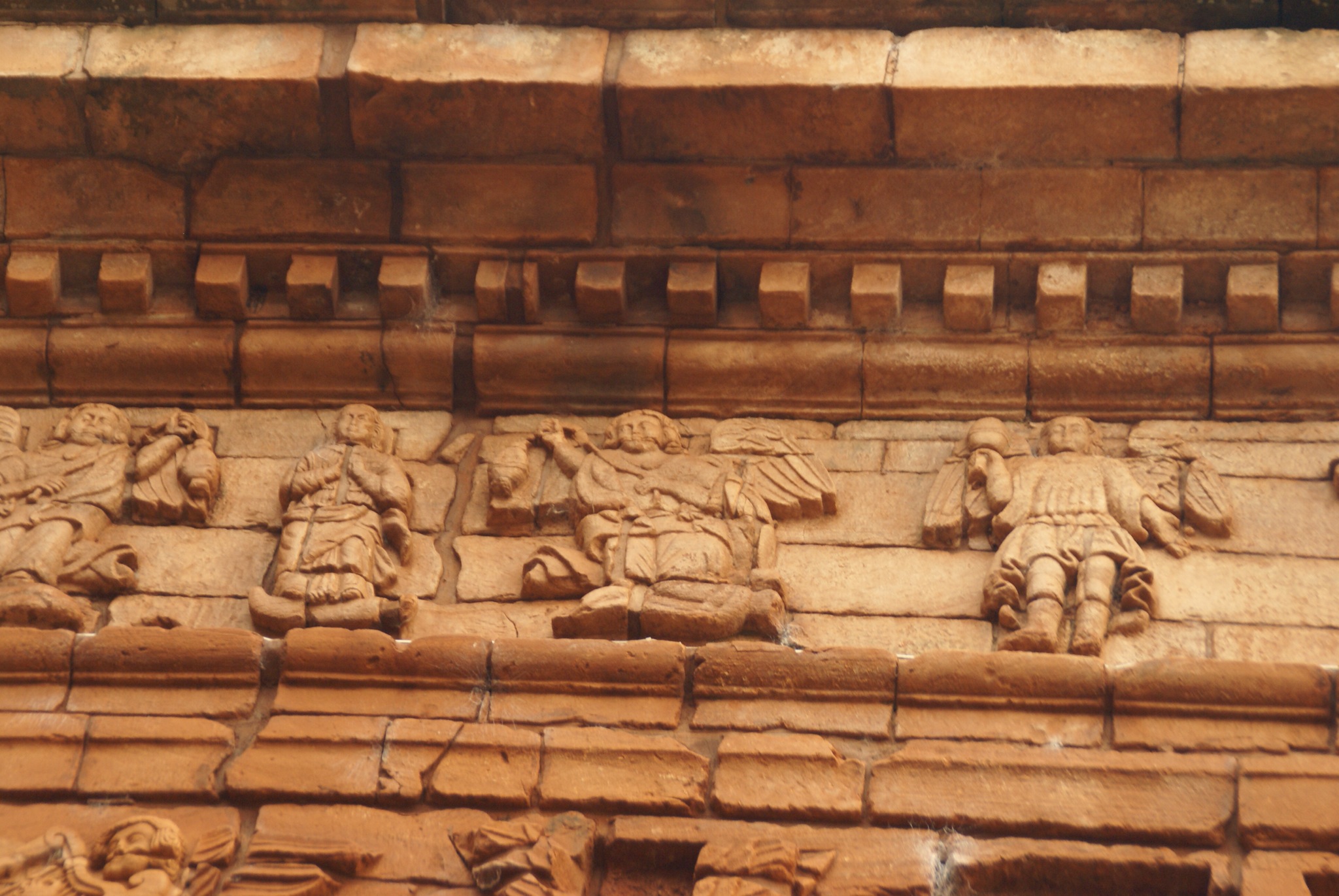
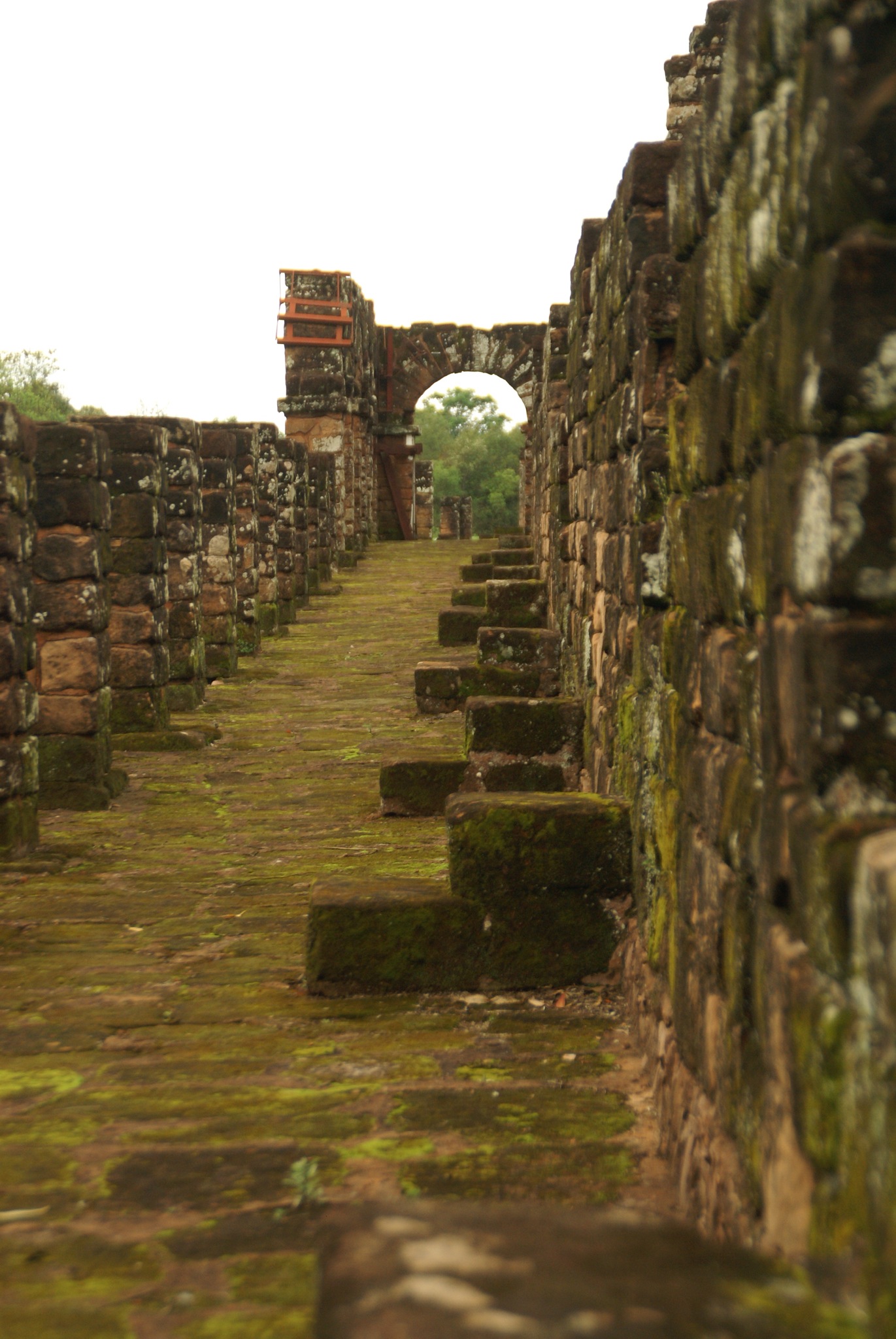
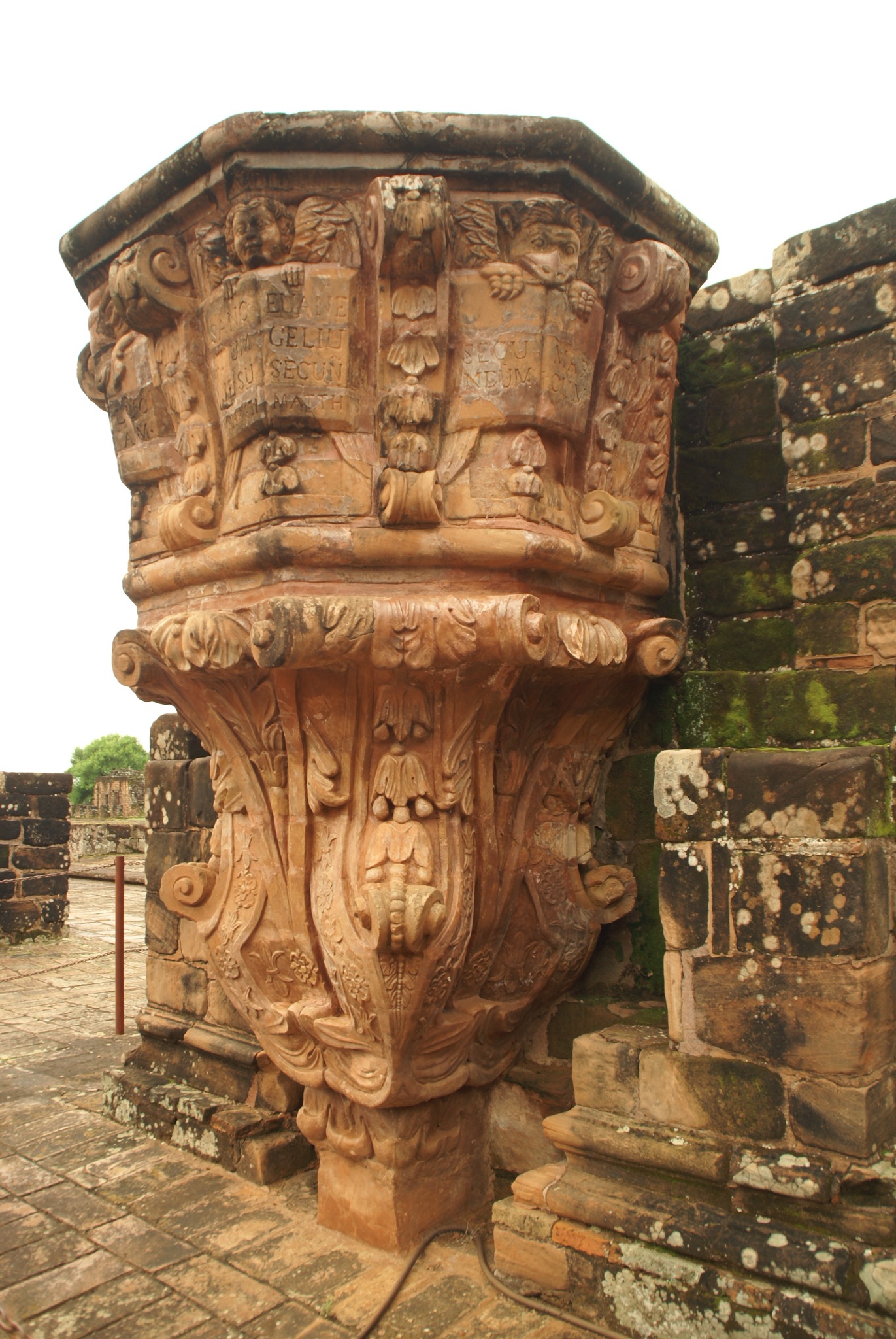 The second mission we visited was at Jesus. Here just the ruins of the fantastic church had been preserved.
The second mission we visited was at Jesus. Here just the ruins of the fantastic church had been preserved.
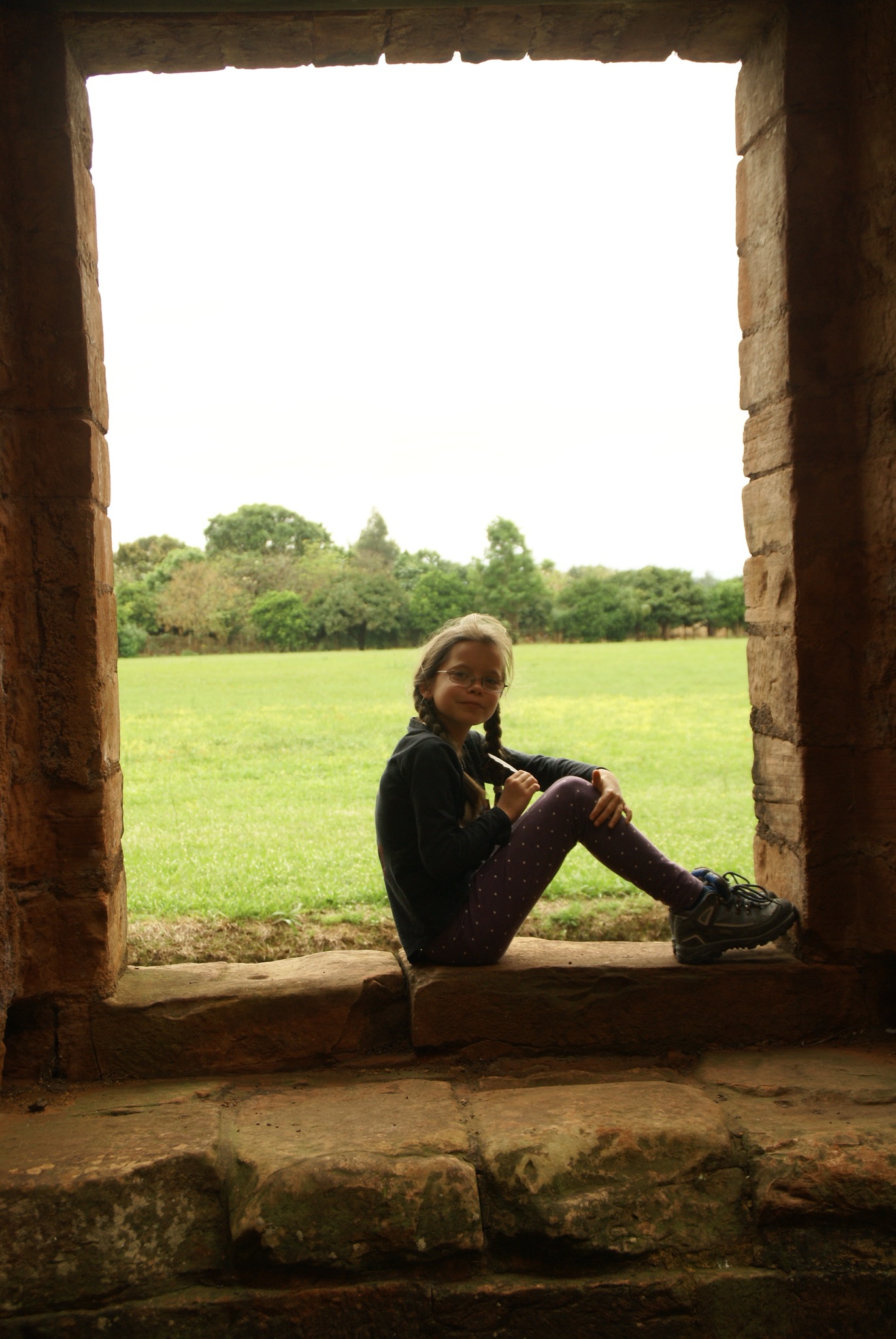
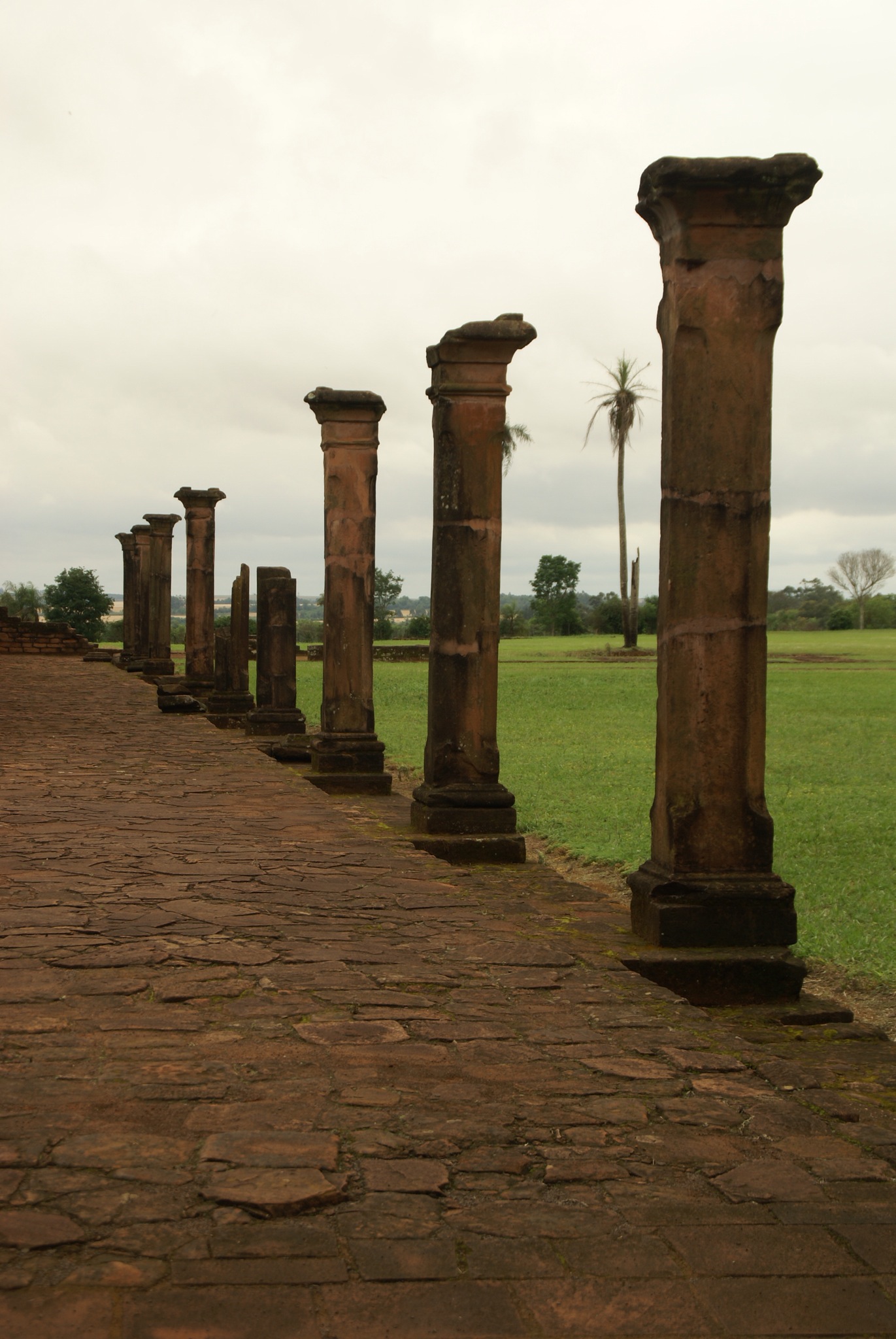
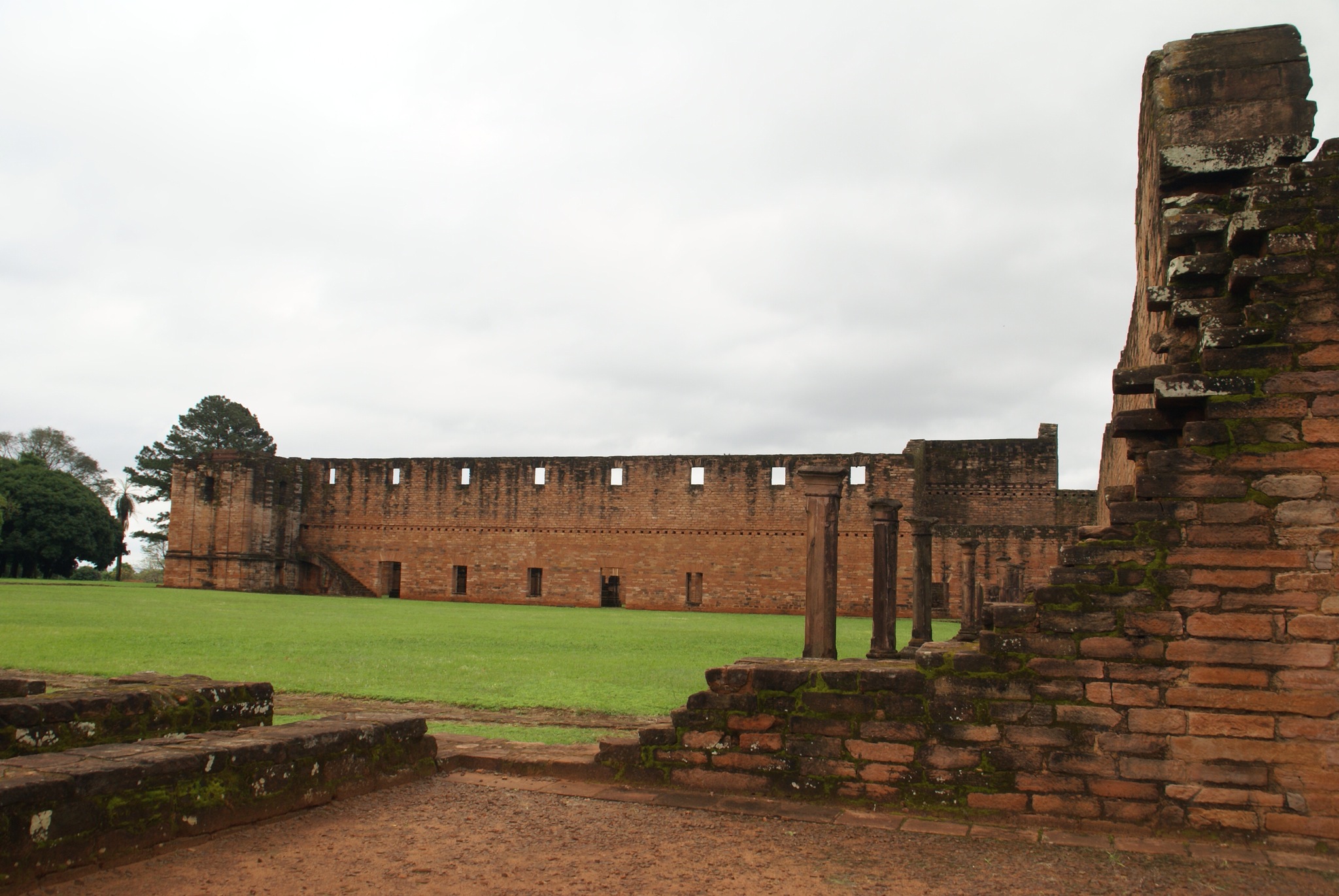
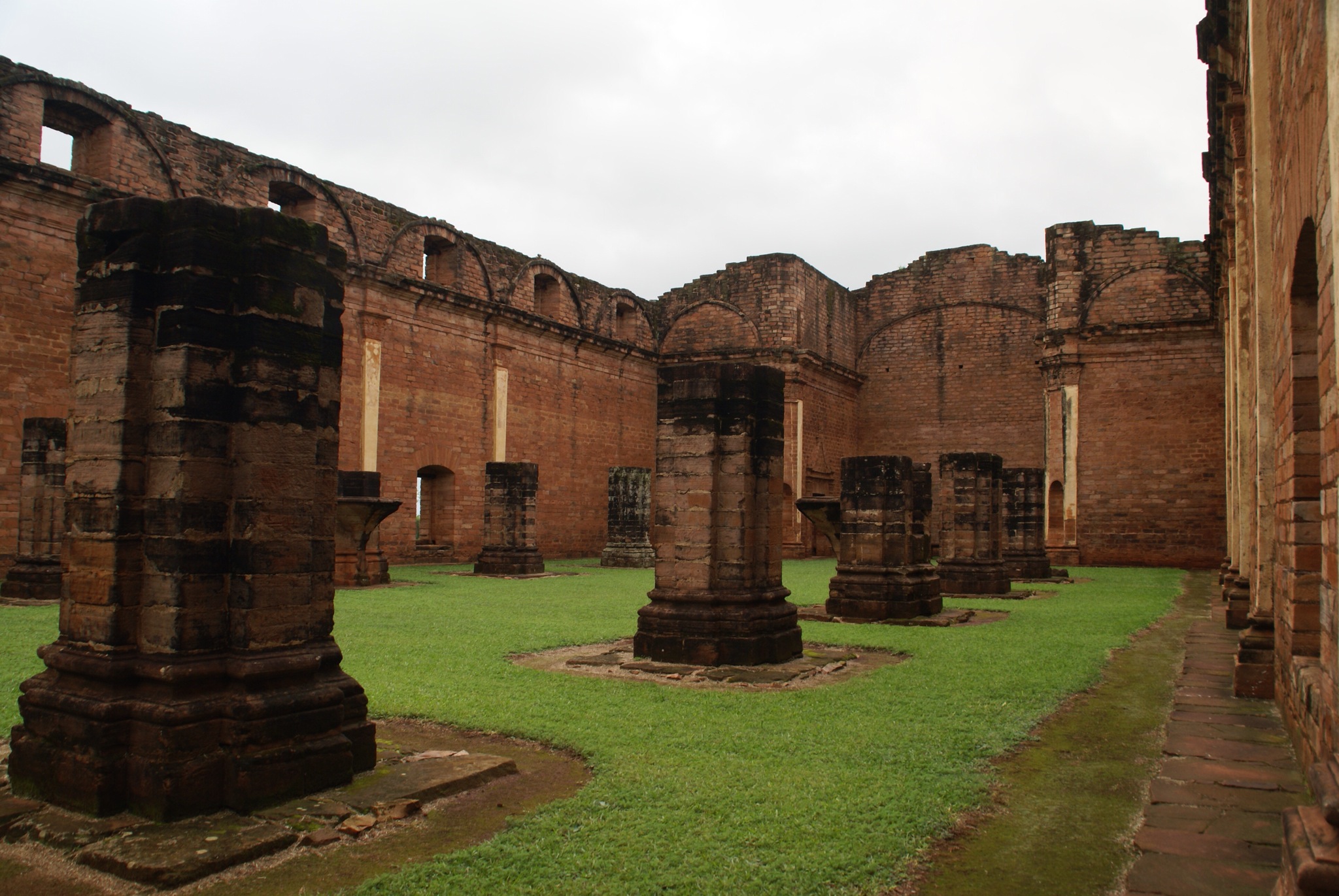 It was very interesting to learn about the work of the Jesuits and how different they were to much of the work of the Catholic Church at that time. As we had decent internet we also had to watch the movie The Mission which depicts part of the history and it was great to watch it sitting in the same scenic surroundings.
After the missions we headed to the East of Paraguay to Ciudad del Este to see the second largest dam in the world, the Itaipu dam. We arrived just in time to do the free tour so hopped on a bus to be told all the facts and figures and to see the actual dam. Unfortunately we could not do the tour going down into the dam as to do that everyone had to be over 14 years old. The dam is on the River Paraná which separates Paraguay and Brazil. Alisha was a bit concerned when I told her we had crossed over into Brazil and did not have our passports. The dam is certainly impressive and provides 90 per cent of the electrical needs for Paraguay and over 20 per cent of the total electric needs for Brazil.
It was very interesting to learn about the work of the Jesuits and how different they were to much of the work of the Catholic Church at that time. As we had decent internet we also had to watch the movie The Mission which depicts part of the history and it was great to watch it sitting in the same scenic surroundings.
After the missions we headed to the East of Paraguay to Ciudad del Este to see the second largest dam in the world, the Itaipu dam. We arrived just in time to do the free tour so hopped on a bus to be told all the facts and figures and to see the actual dam. Unfortunately we could not do the tour going down into the dam as to do that everyone had to be over 14 years old. The dam is on the River Paraná which separates Paraguay and Brazil. Alisha was a bit concerned when I told her we had crossed over into Brazil and did not have our passports. The dam is certainly impressive and provides 90 per cent of the electrical needs for Paraguay and over 20 per cent of the total electric needs for Brazil.
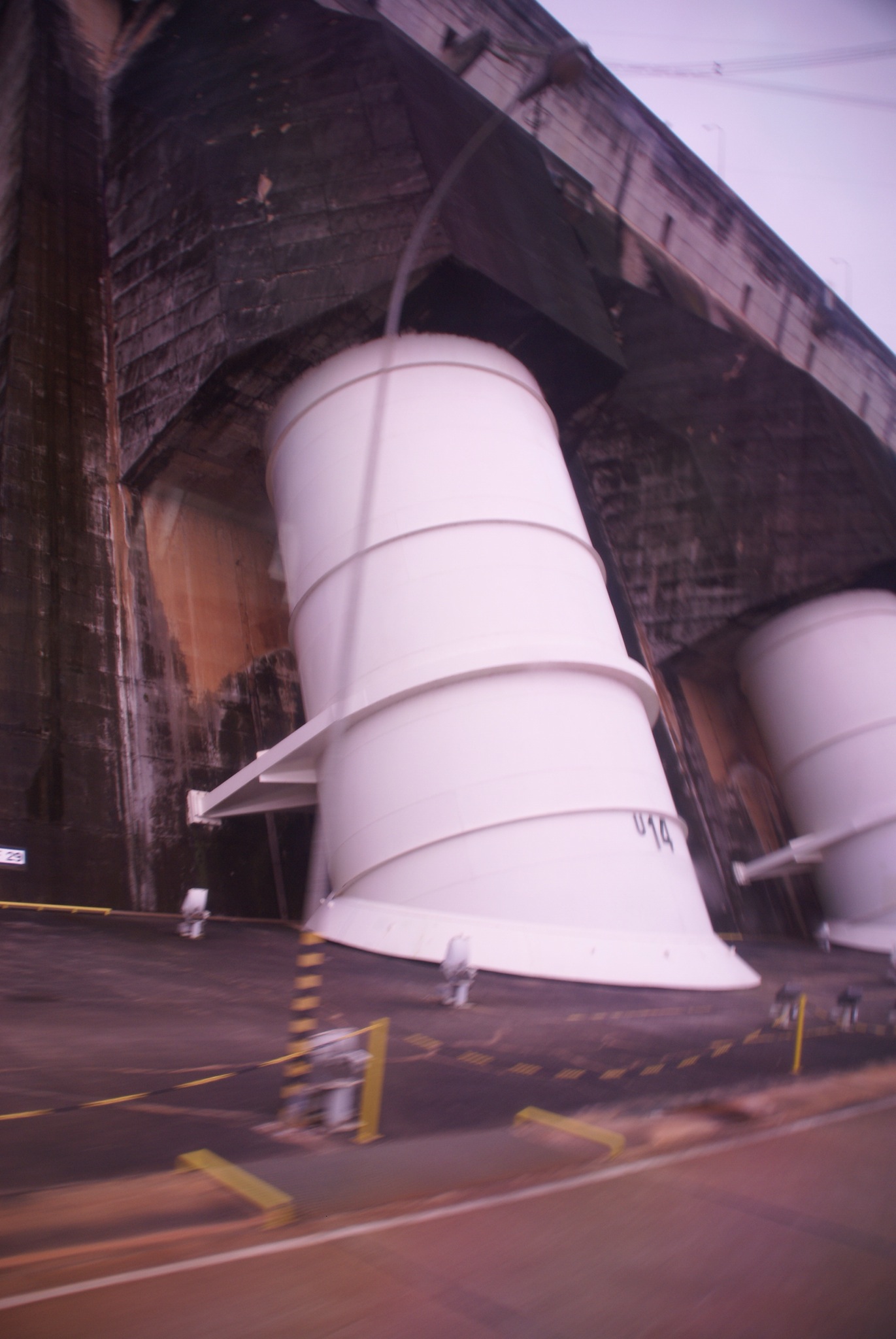
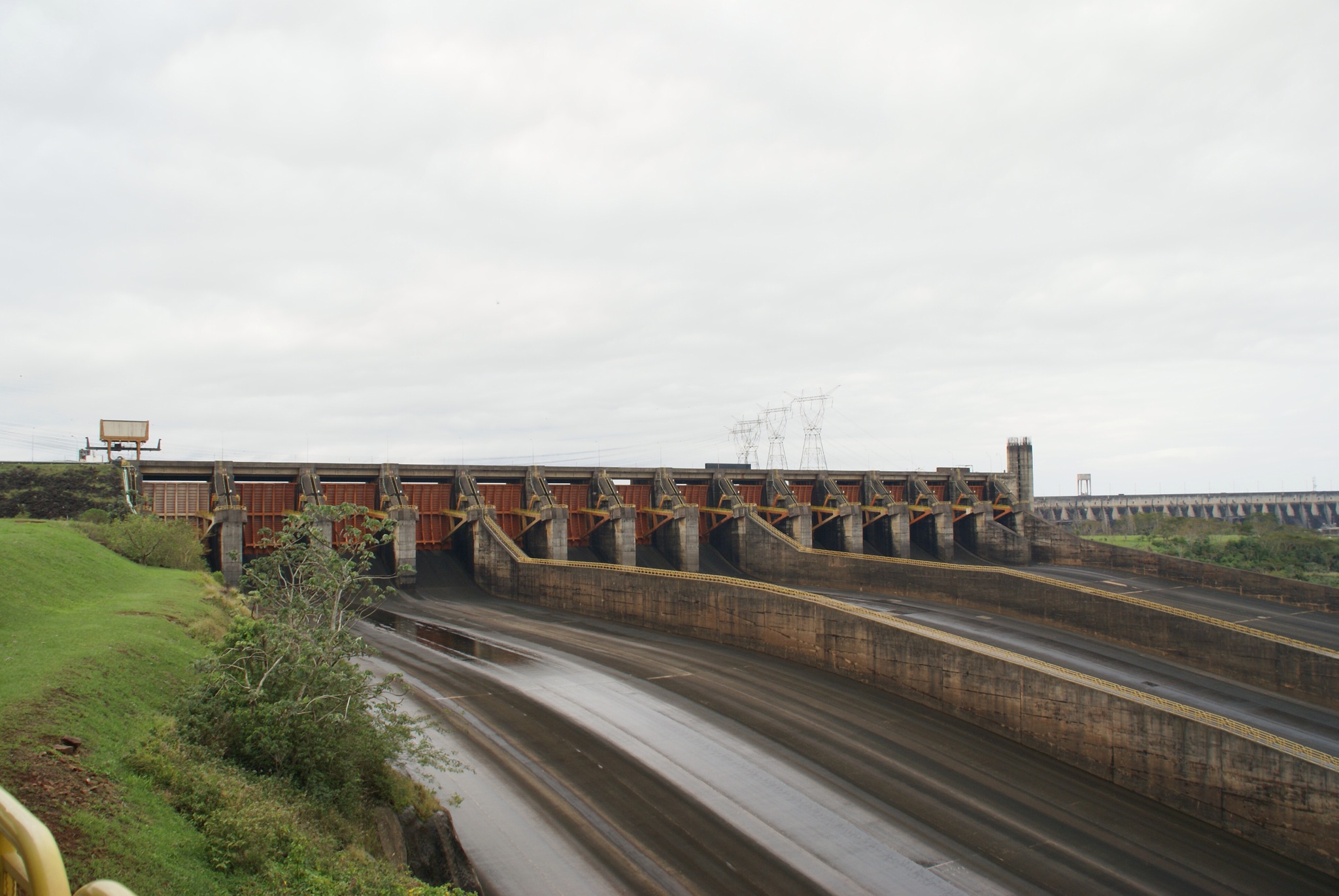
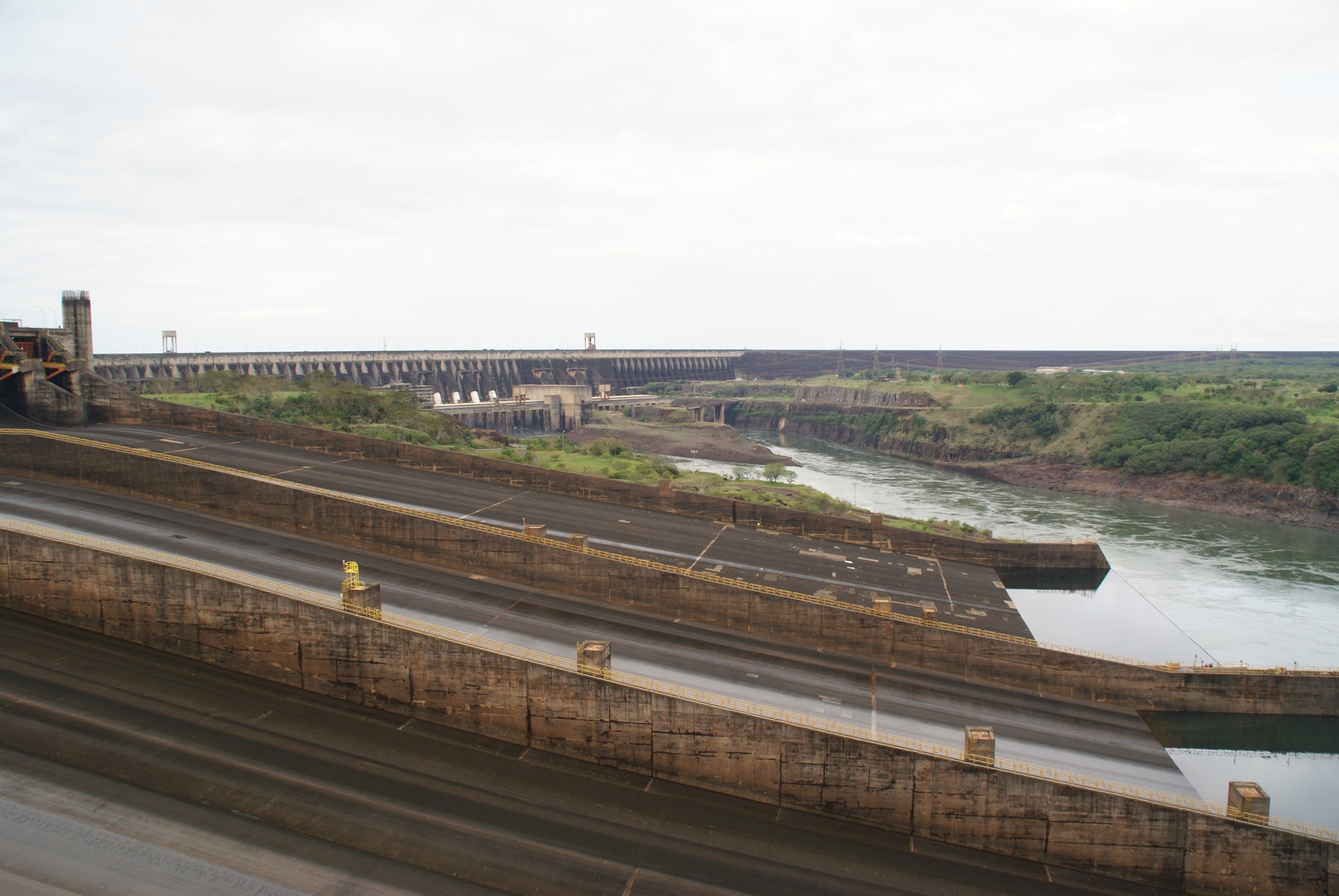
 Whilst the dam is not without its environmental controversy the power it produces comes from water and saves the need to burn countless barrels of oil every day to produce electricity. It's difficult to know which is better.
We were hoping to camp in one of the nature reserves that had been created nearby by the dam company so after the tour we enquired how we could get there. The very helpful staff explained that unfortunately the reserve was closed due to the rain but they suggested a campsite near some wonderful waterfalls only 20kms South.
We were very close to Iguazu waterfalls but we would not be visiting them just yet as we would be returning this way so instead we went to camp near the Saltas del Monday falls. As these falls are much smaller than Iguazu very few people visit them. The next morning we headed down to see them and they were very impressive with the river swollen with all the rain.
Whilst the dam is not without its environmental controversy the power it produces comes from water and saves the need to burn countless barrels of oil every day to produce electricity. It's difficult to know which is better.
We were hoping to camp in one of the nature reserves that had been created nearby by the dam company so after the tour we enquired how we could get there. The very helpful staff explained that unfortunately the reserve was closed due to the rain but they suggested a campsite near some wonderful waterfalls only 20kms South.
We were very close to Iguazu waterfalls but we would not be visiting them just yet as we would be returning this way so instead we went to camp near the Saltas del Monday falls. As these falls are much smaller than Iguazu very few people visit them. The next morning we headed down to see them and they were very impressive with the river swollen with all the rain.
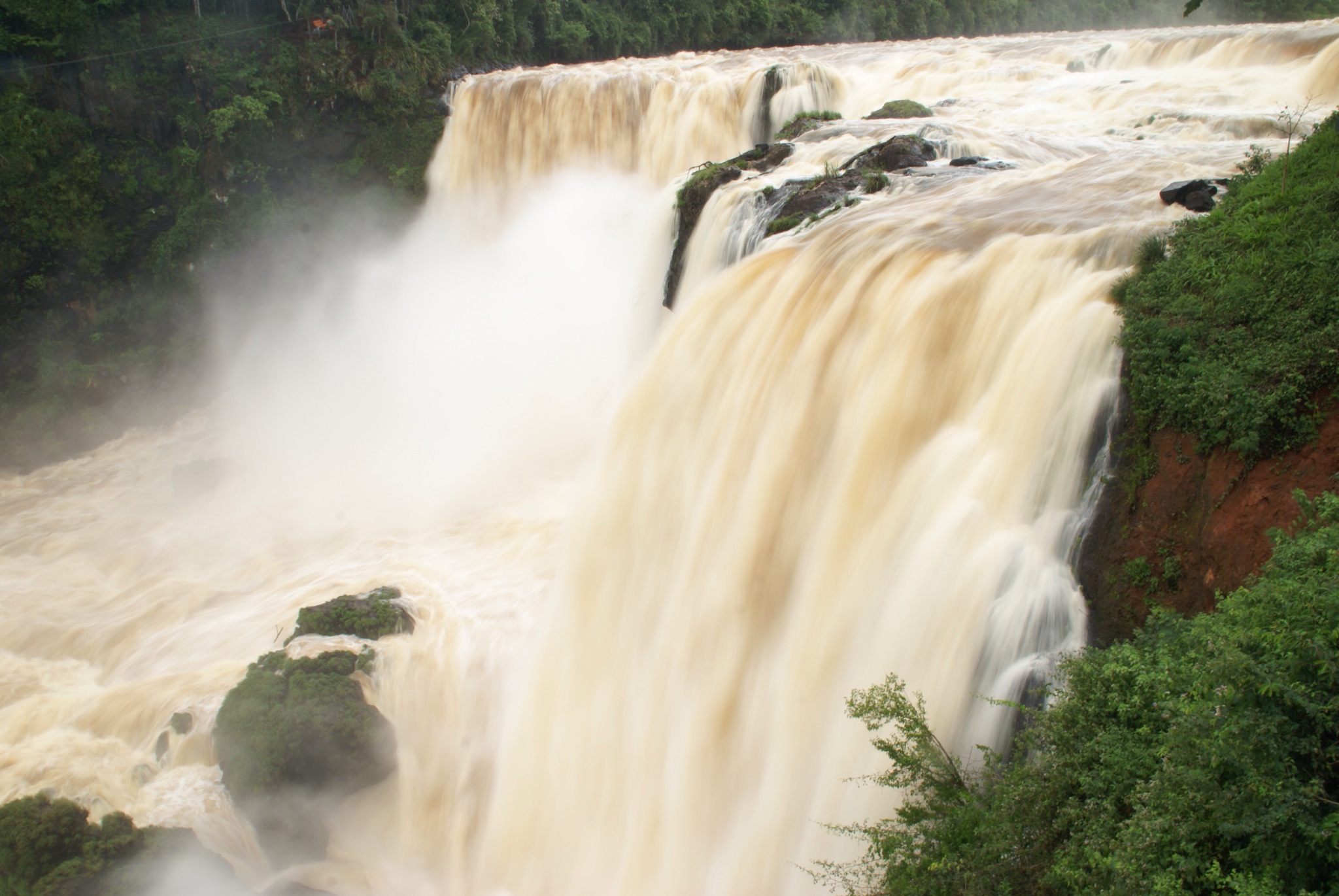
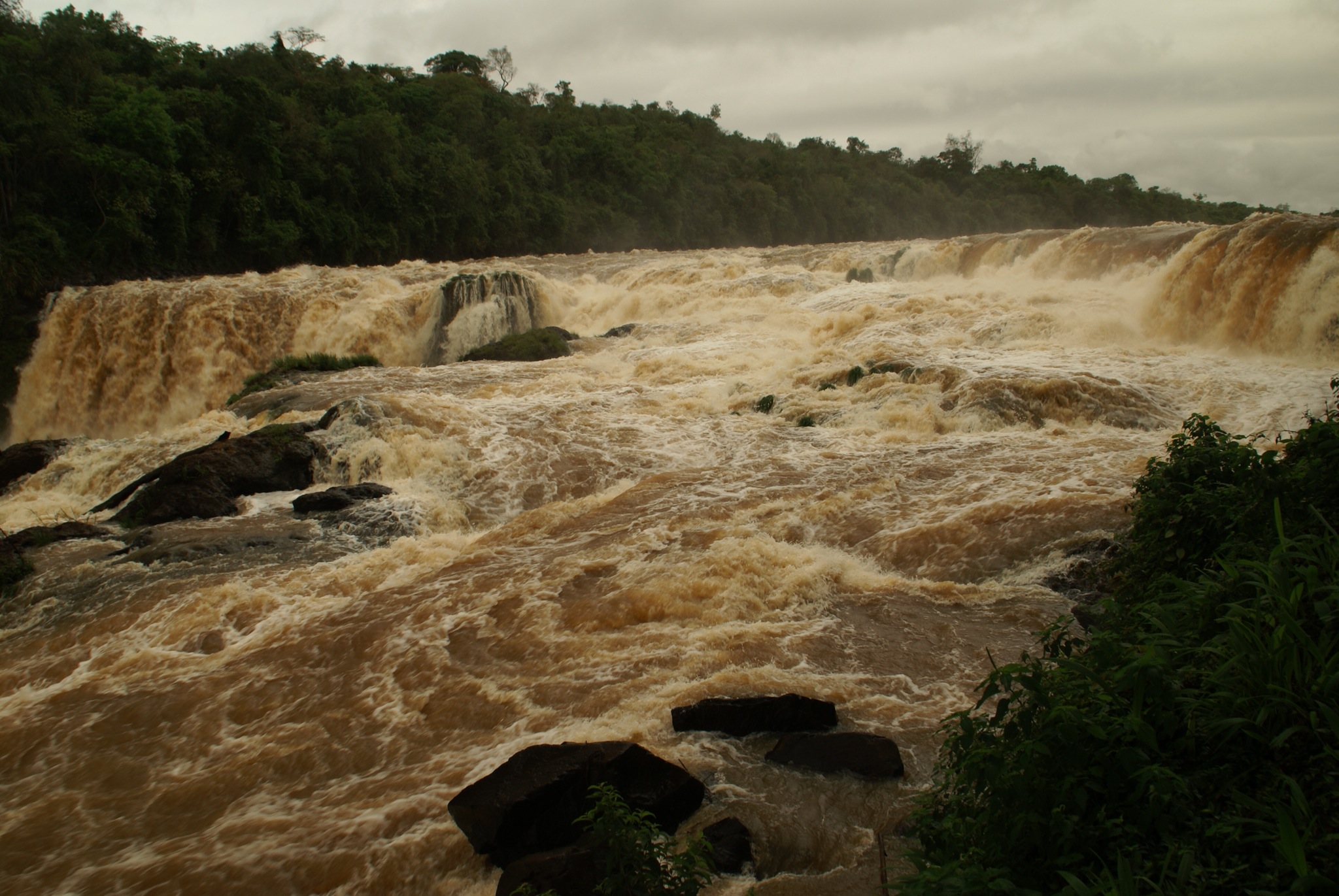 We set off back west towards Ascucion. On the way we thought we would visit the large Basilica at Caacupe. This is meant to be one of the biggest churches in Paraguay. Sometimes photos do not do a sight justice and sometimes, well, the sight is just not that impressive as proved to be the case this time.
We set off back west towards Ascucion. On the way we thought we would visit the large Basilica at Caacupe. This is meant to be one of the biggest churches in Paraguay. Sometimes photos do not do a sight justice and sometimes, well, the sight is just not that impressive as proved to be the case this time.
 We headed out of town looking for somewhere to camp. Along the road we saw a sign that said Ecocamping so followed the little track to a small farm where we were able to camp for the night. The farm was set in subtropical forest and the next morning we took a hike up the small hill on the farm. Leaving the farm behind we headed into San Bernadino which was full of people visiting from Ascuncion. We decided to do what they were all doing which was to pull into one of the restaurants and tuck into one of their Sunday buffets.
From there we headed into Ascuncion, the capital of Paraguay. In capital cities finding somewhere to stay is always difficult. We have stayed in car parks, hostels etc. well this time we would be staying in the grounds of the Botanical Gardens. As it was Sunday afternoon when we arrived we had to thread our way through the throngs of visitors enjoying the park to find the small camping area. This would be our base for our visit to Ascuncion.
We headed out of town looking for somewhere to camp. Along the road we saw a sign that said Ecocamping so followed the little track to a small farm where we were able to camp for the night. The farm was set in subtropical forest and the next morning we took a hike up the small hill on the farm. Leaving the farm behind we headed into San Bernadino which was full of people visiting from Ascuncion. We decided to do what they were all doing which was to pull into one of the restaurants and tuck into one of their Sunday buffets.
From there we headed into Ascuncion, the capital of Paraguay. In capital cities finding somewhere to stay is always difficult. We have stayed in car parks, hostels etc. well this time we would be staying in the grounds of the Botanical Gardens. As it was Sunday afternoon when we arrived we had to thread our way through the throngs of visitors enjoying the park to find the small camping area. This would be our base for our visit to Ascuncion. 









